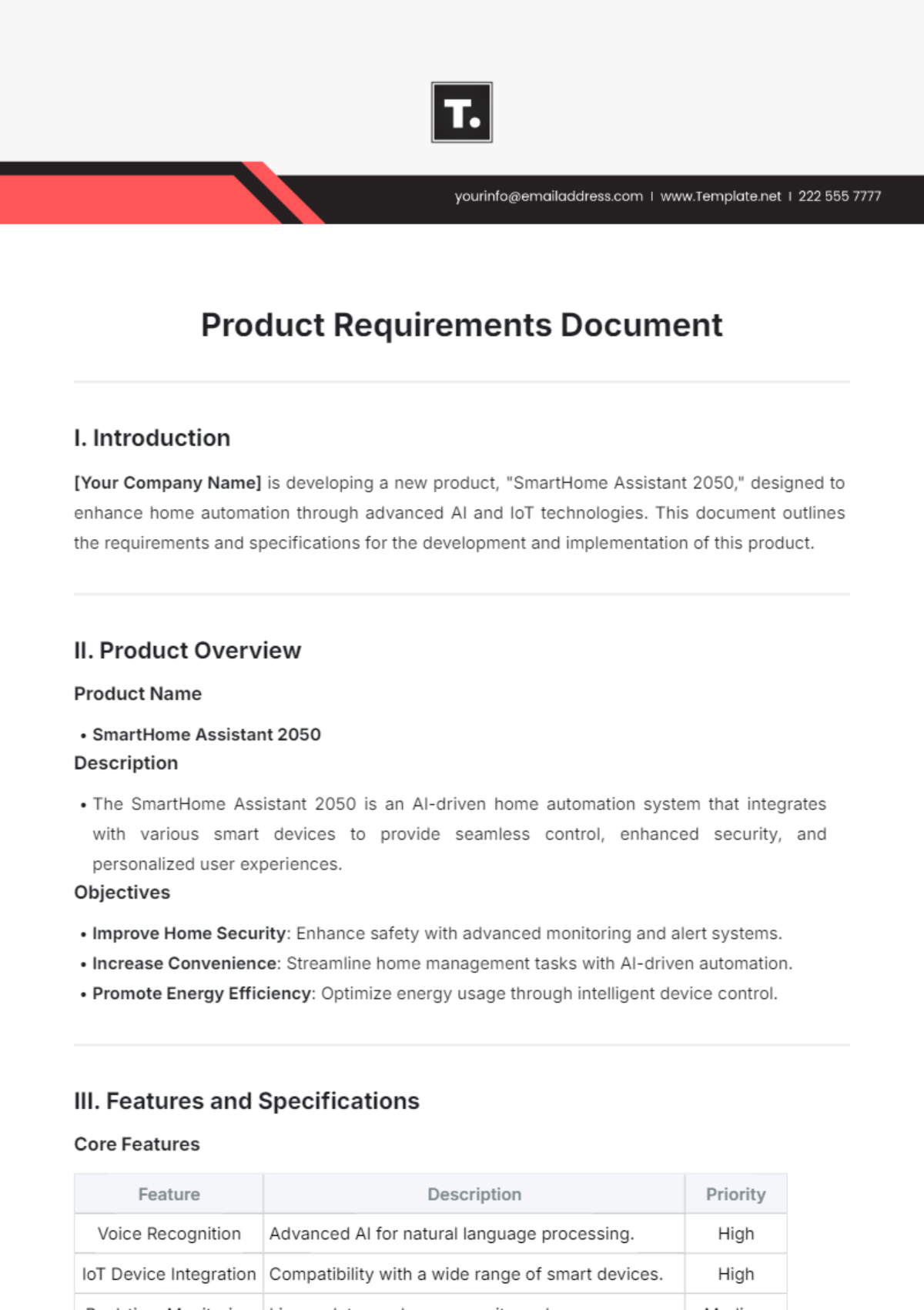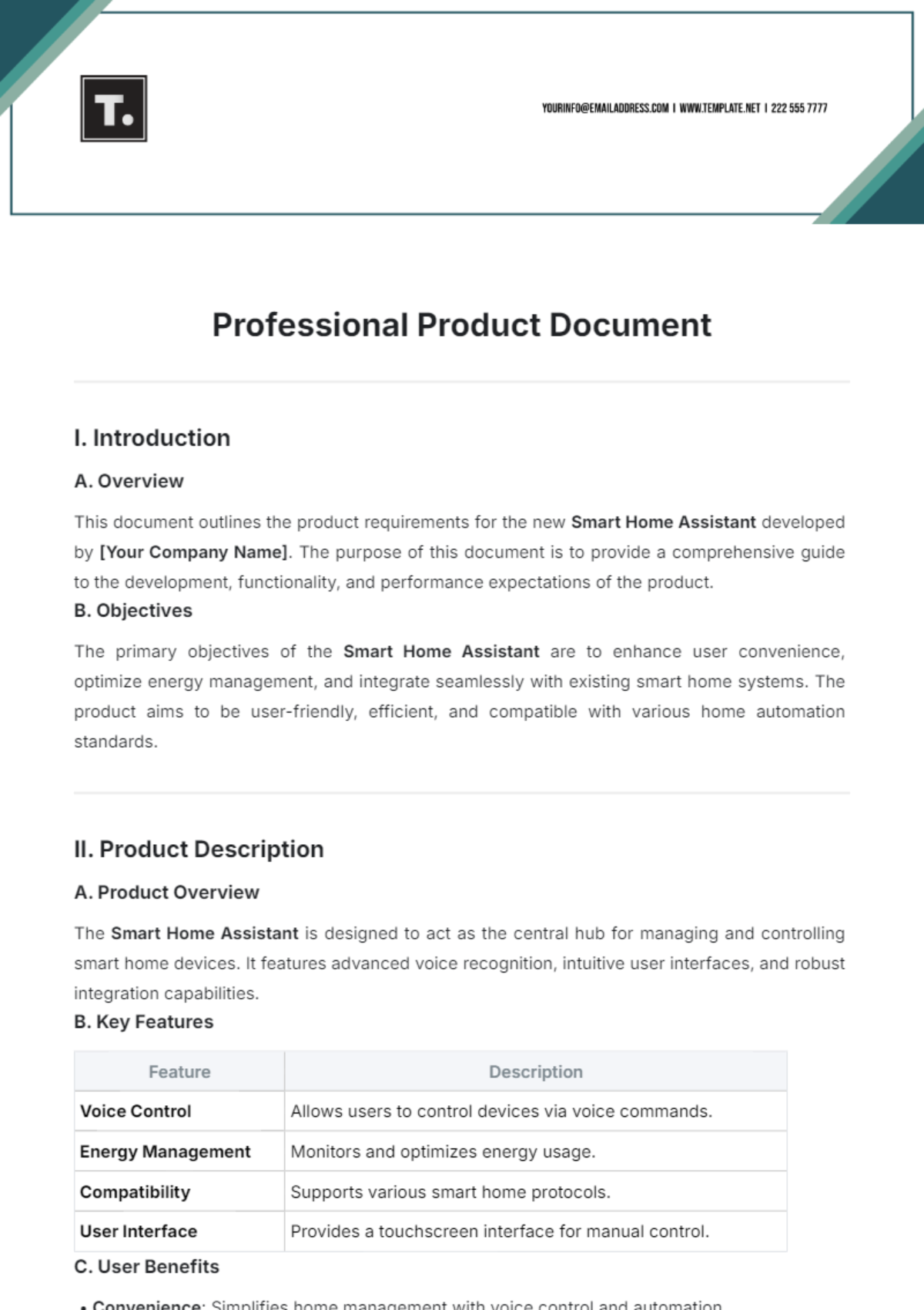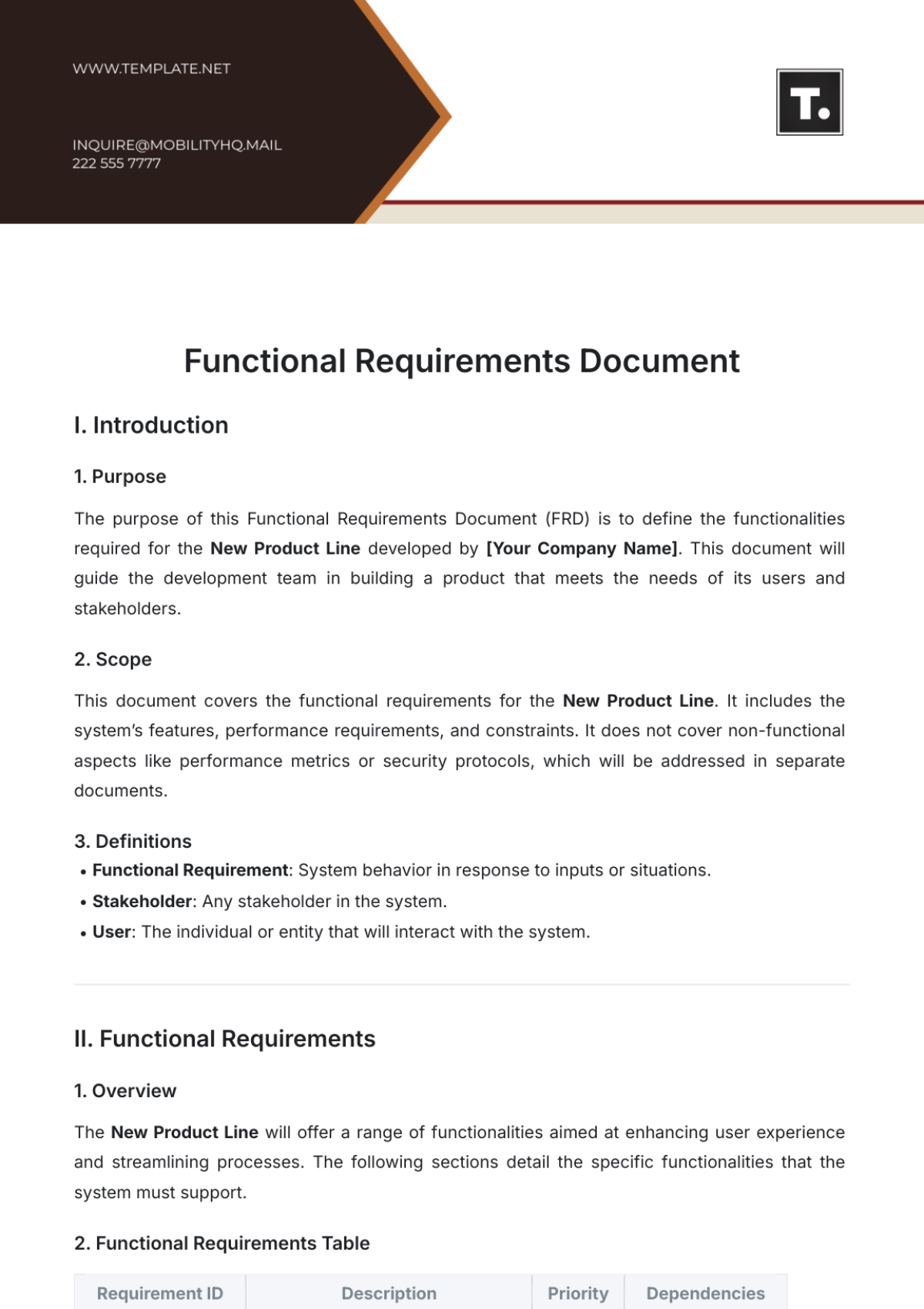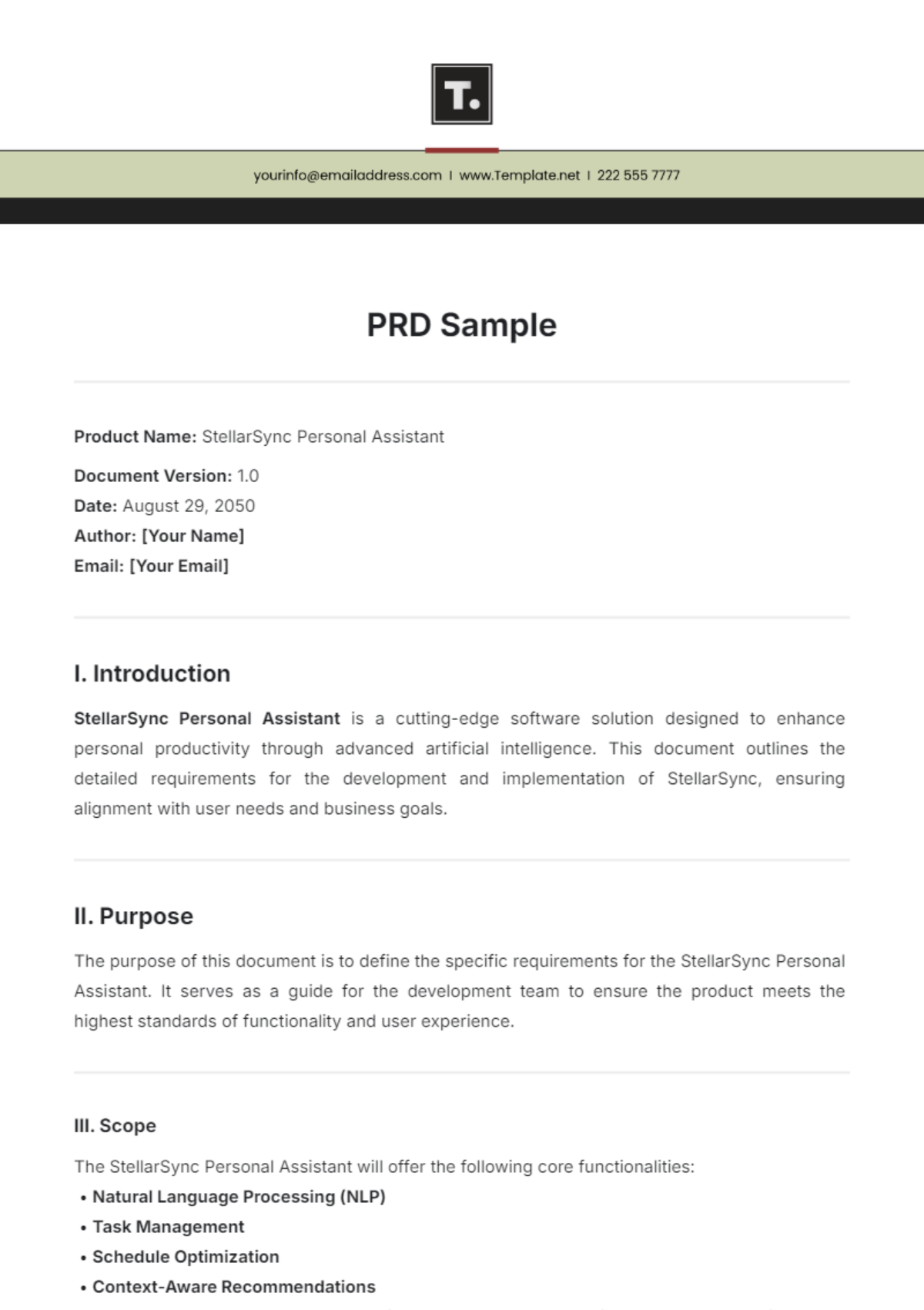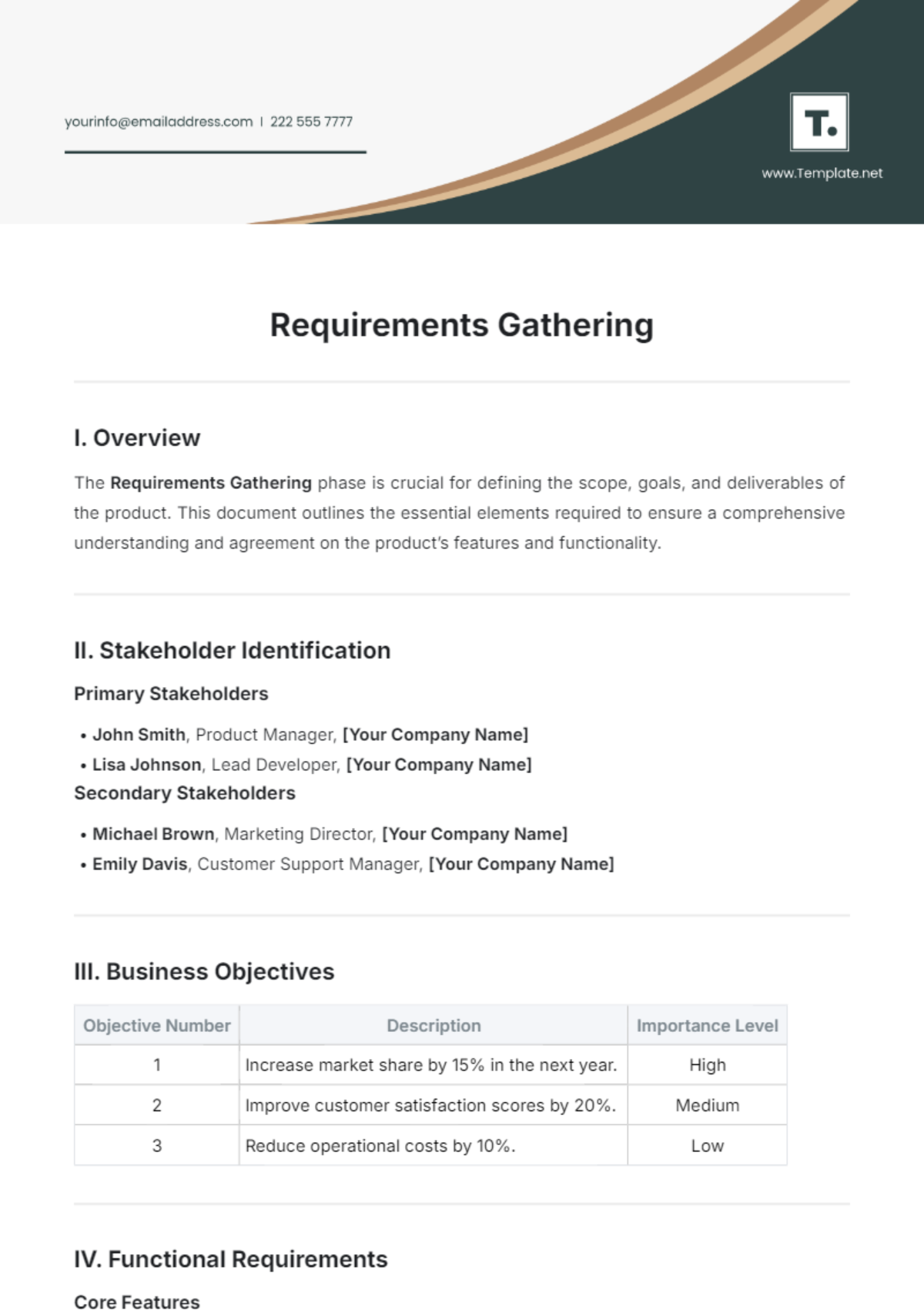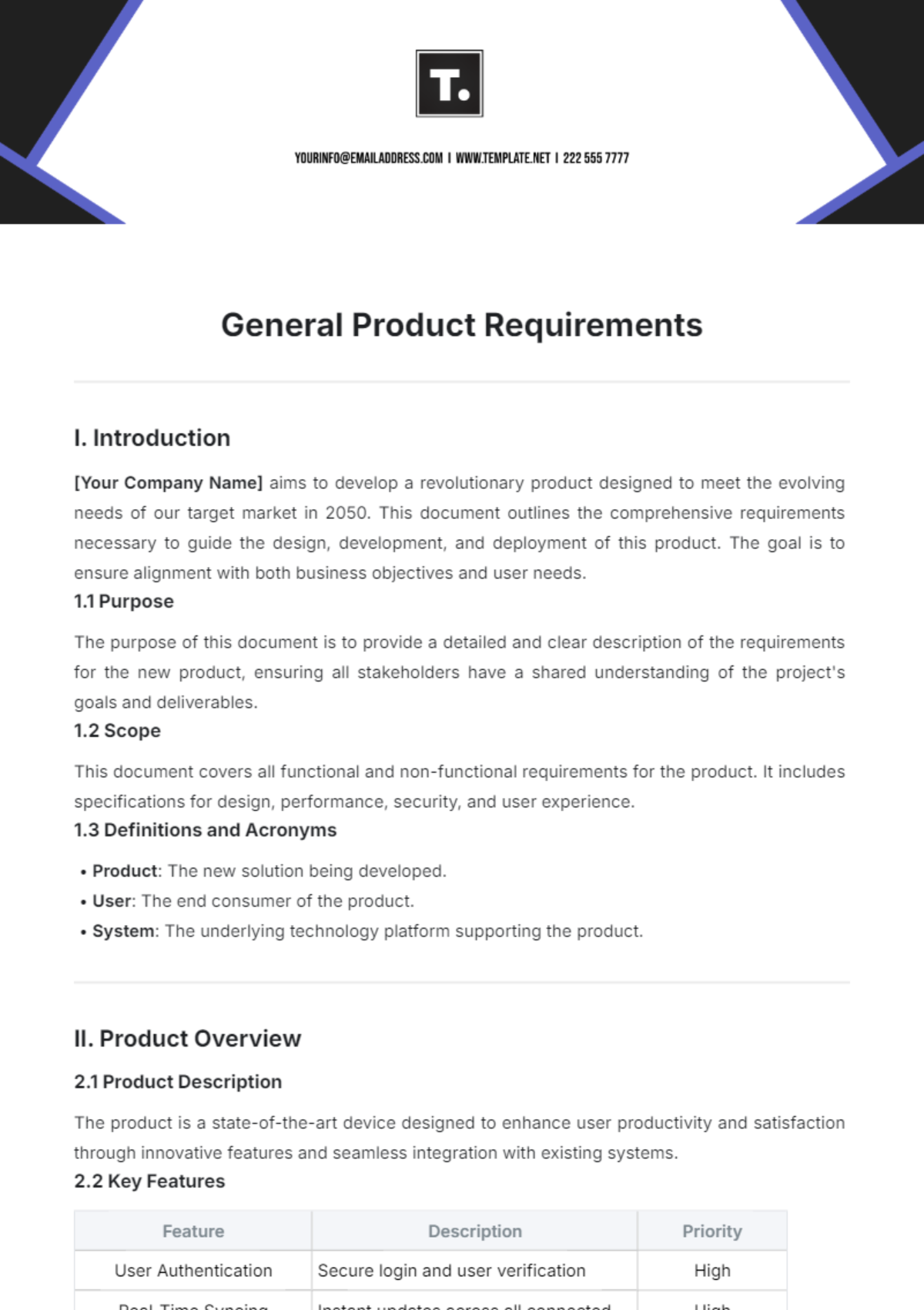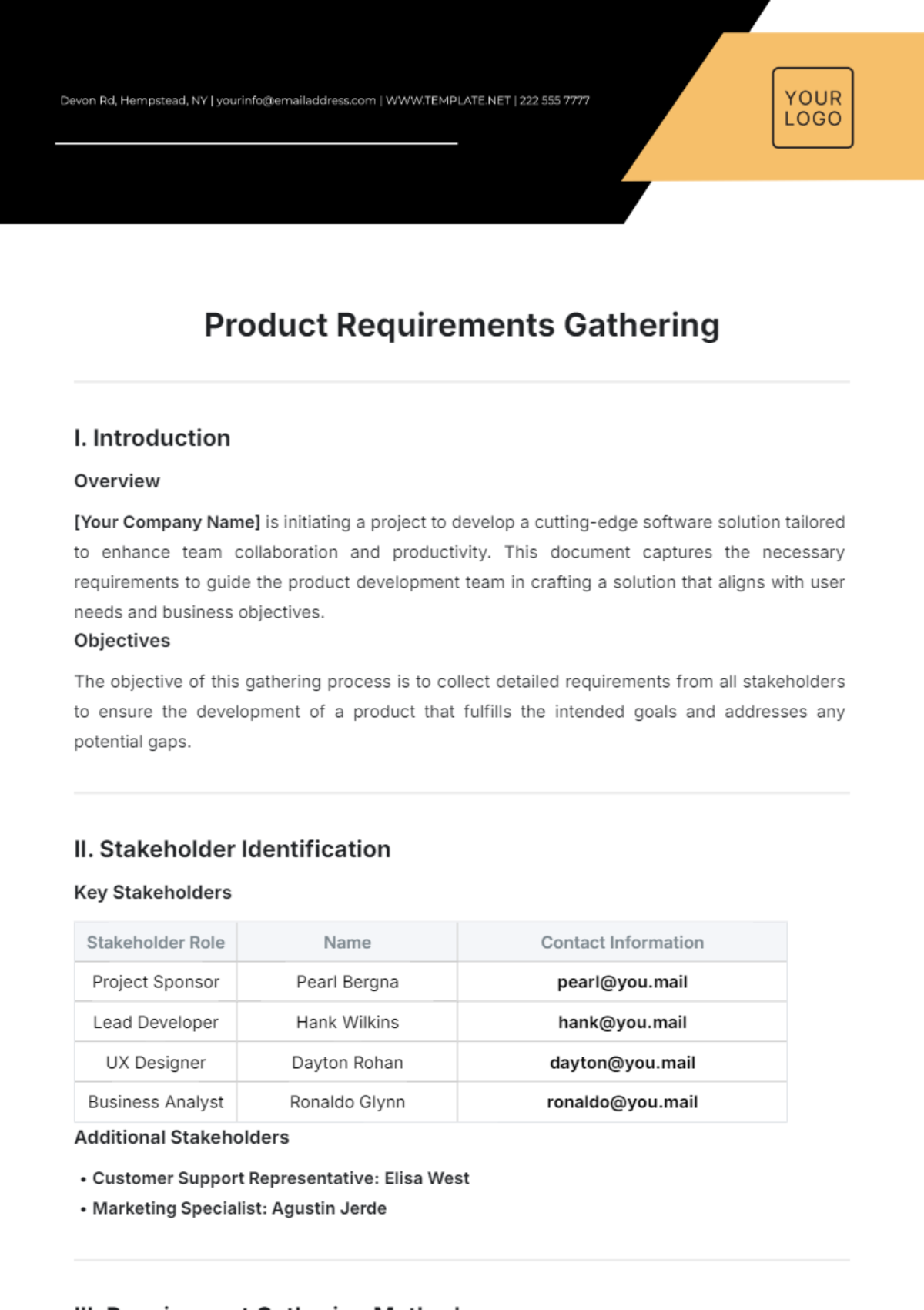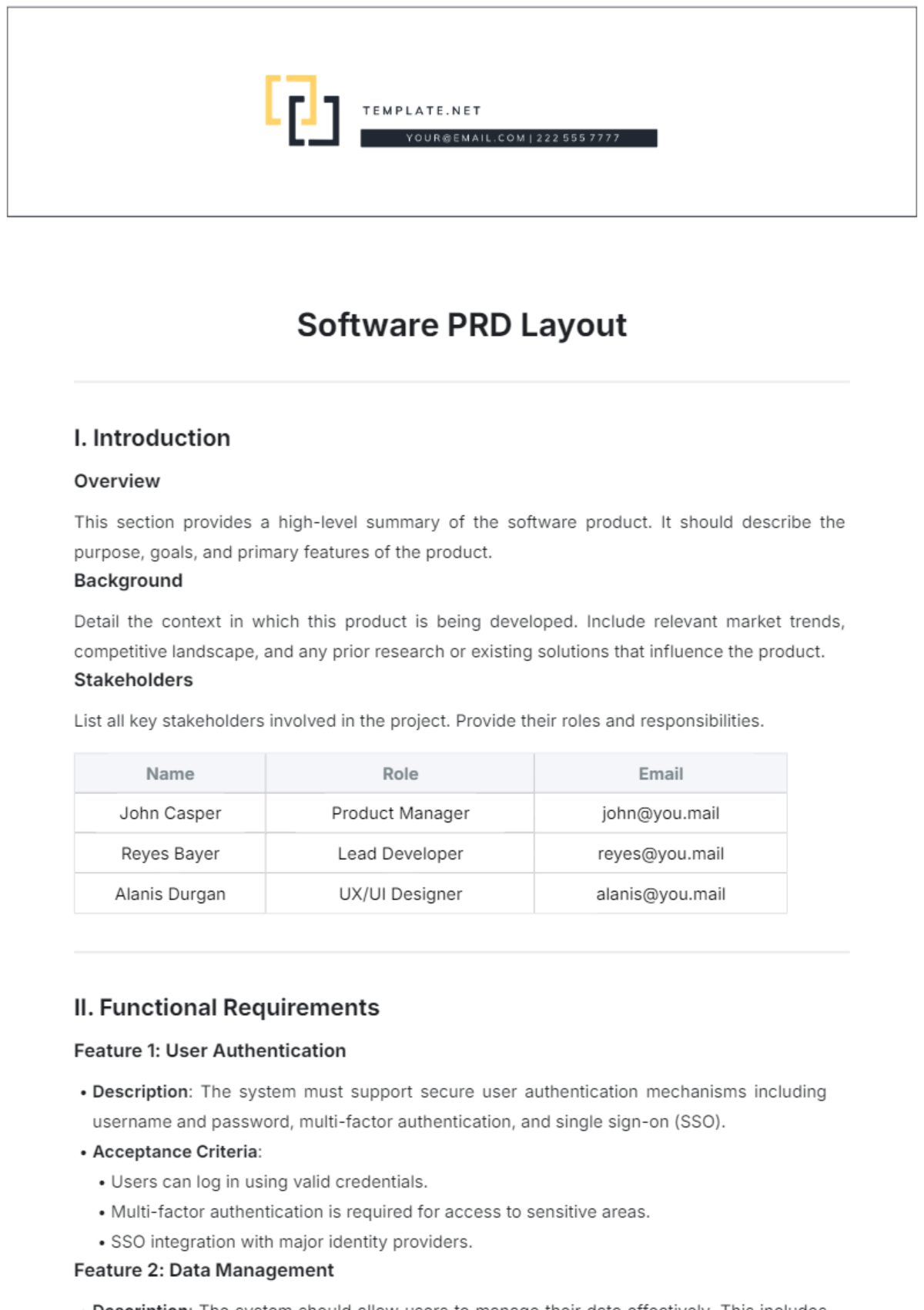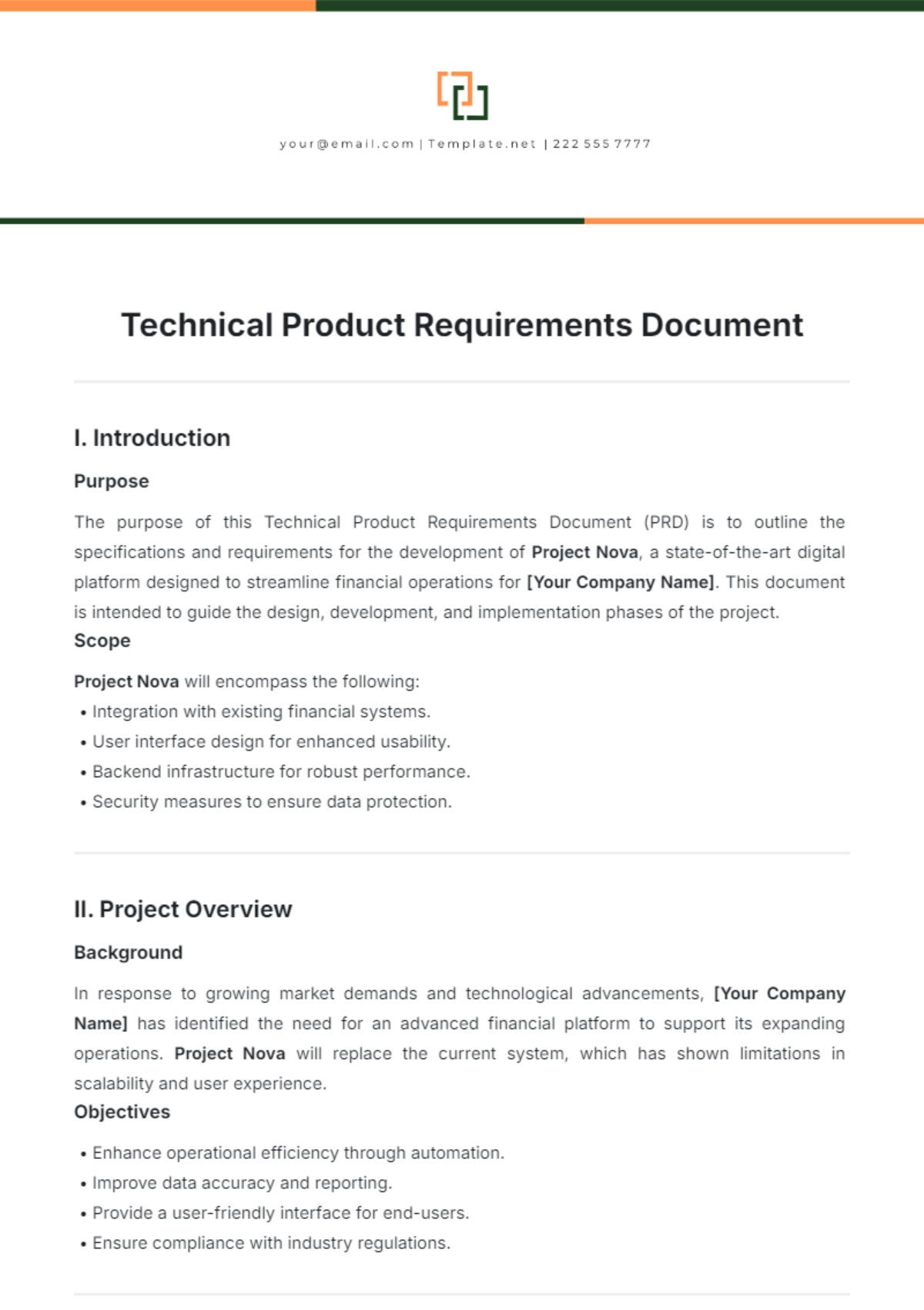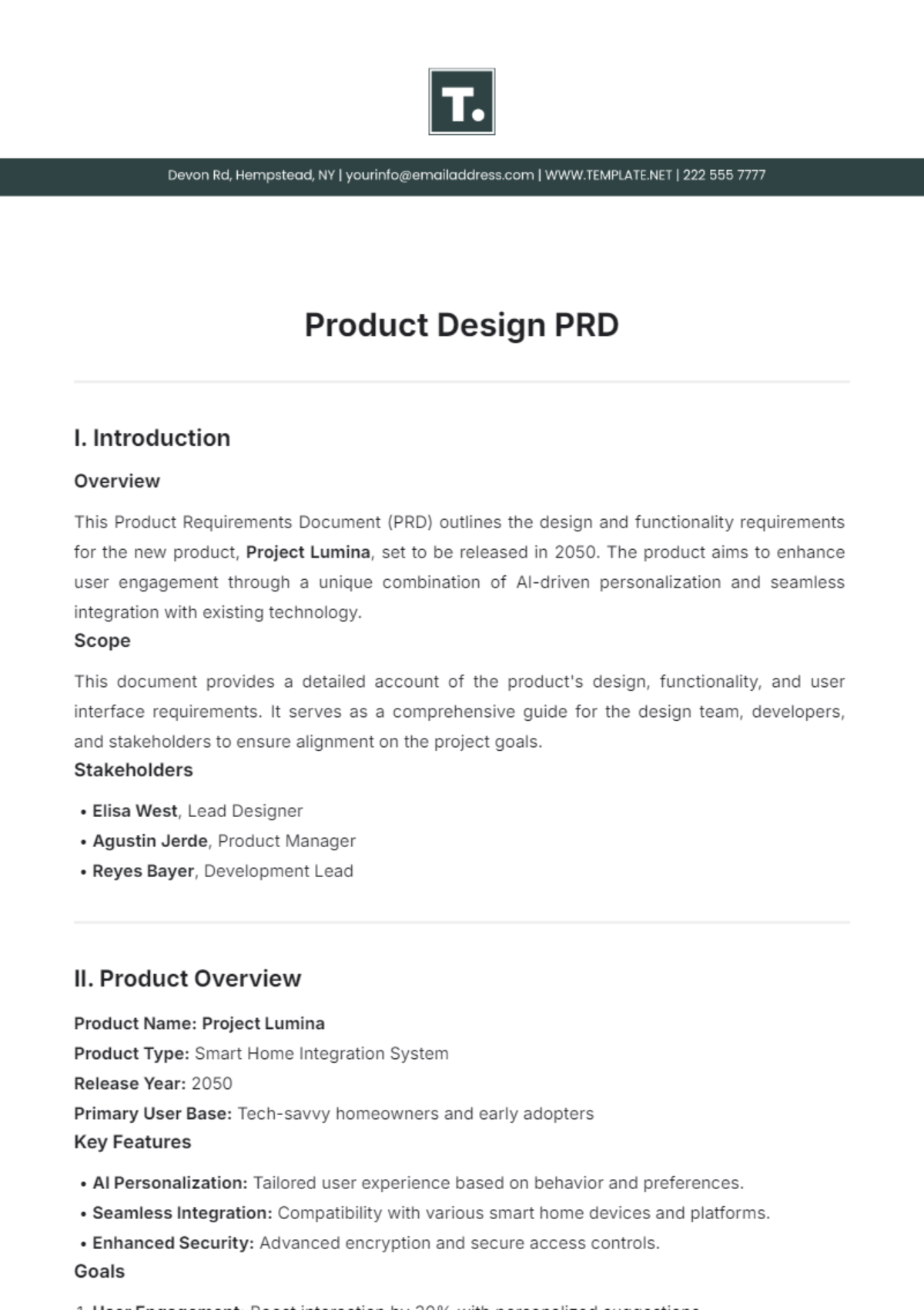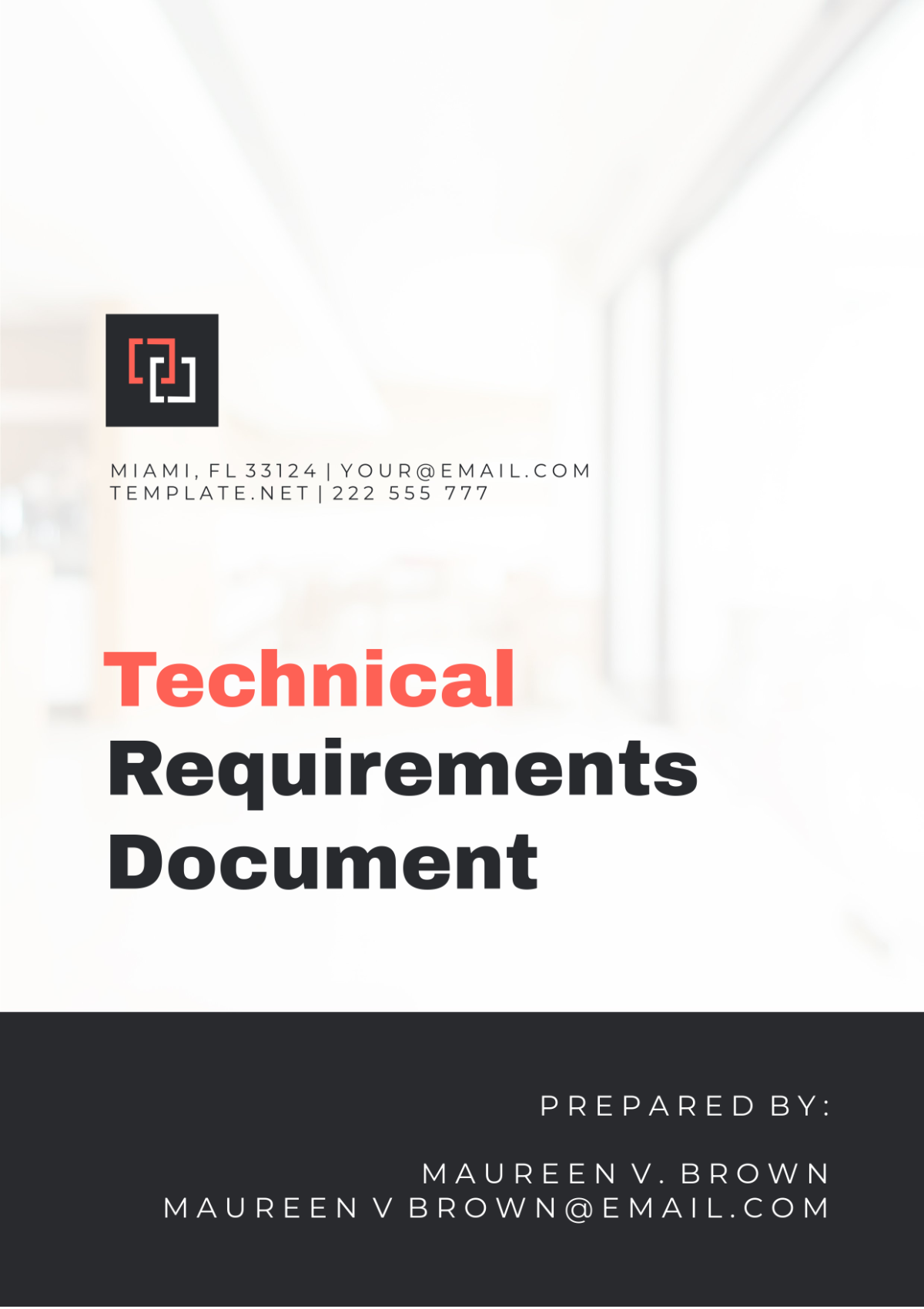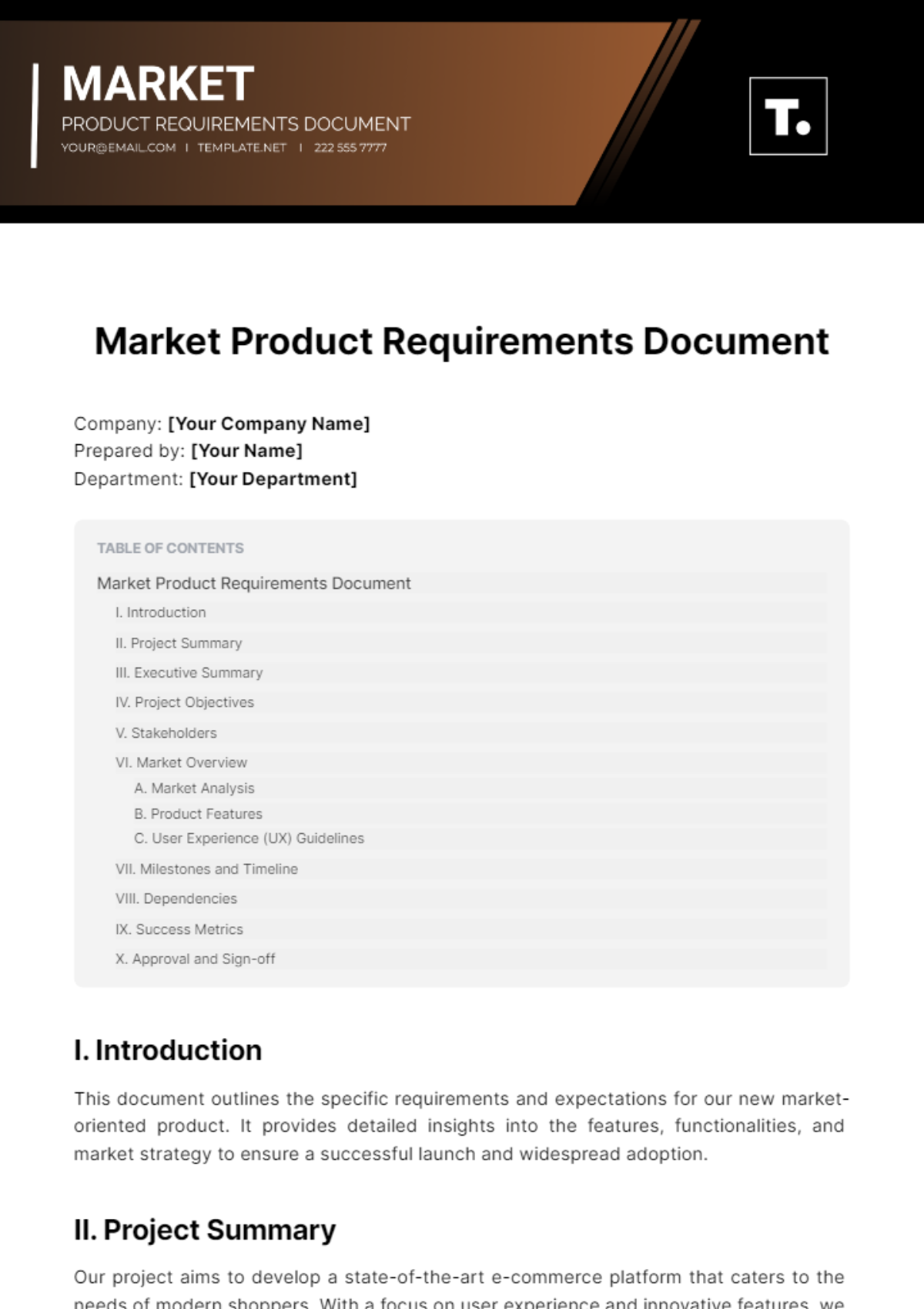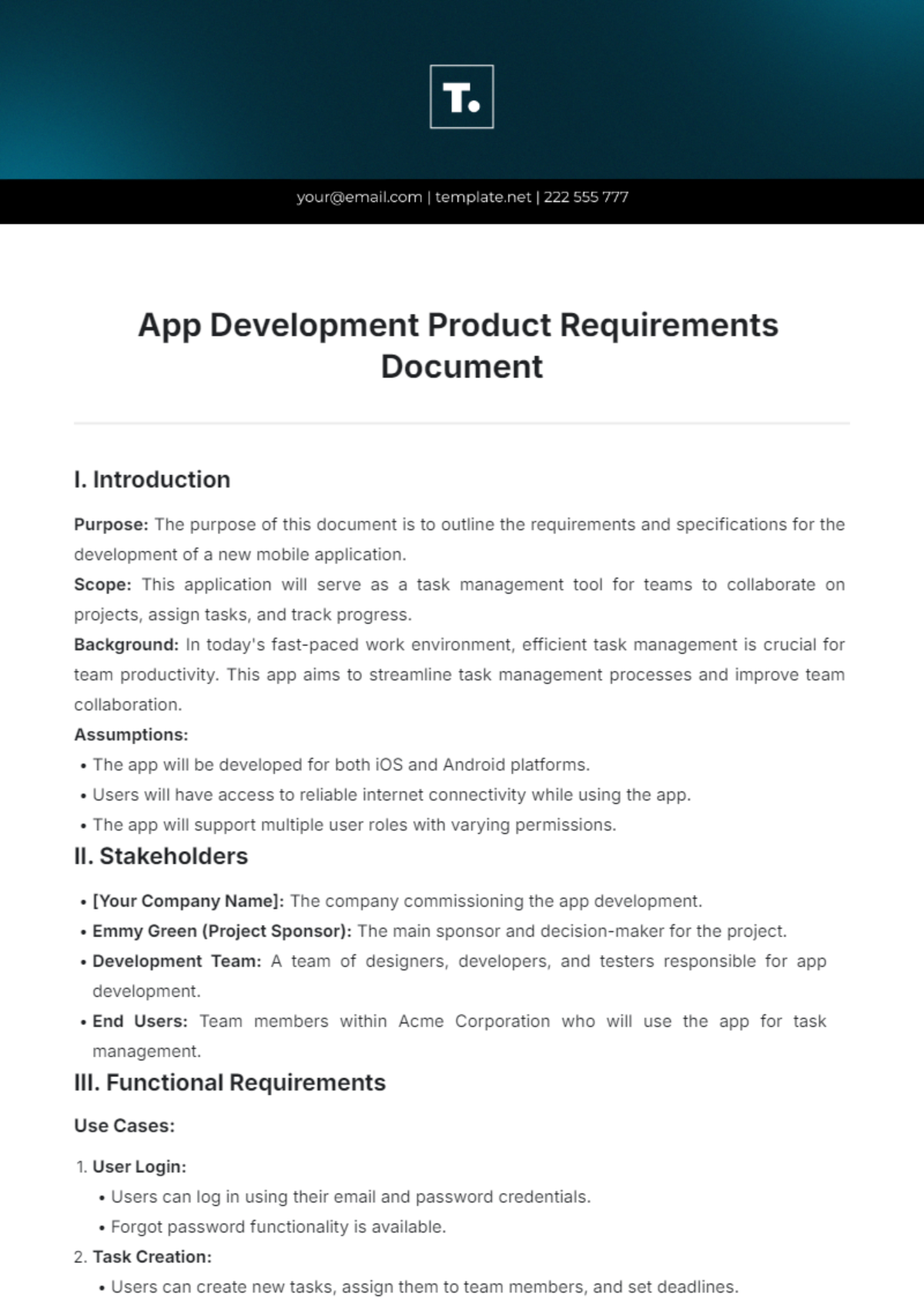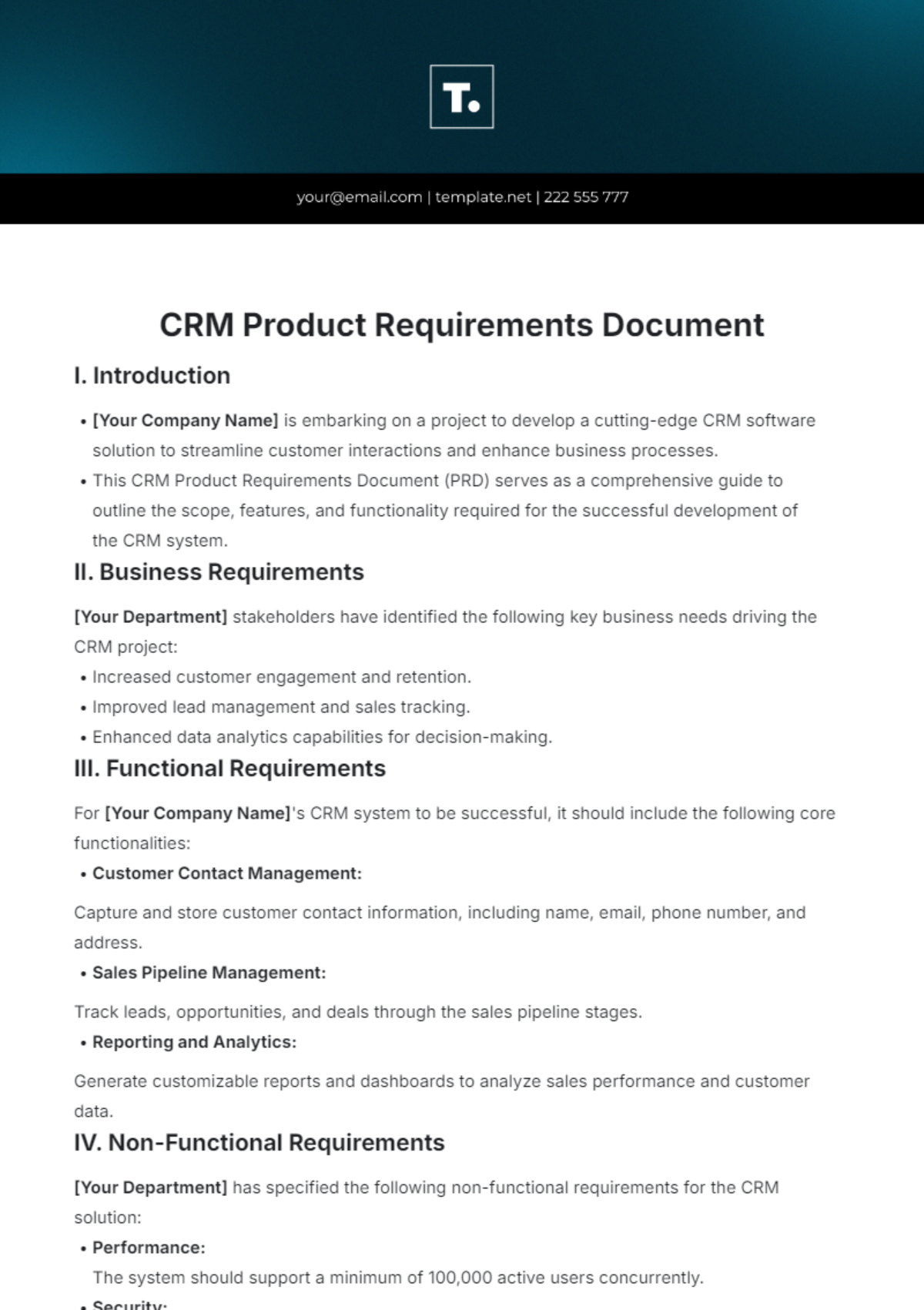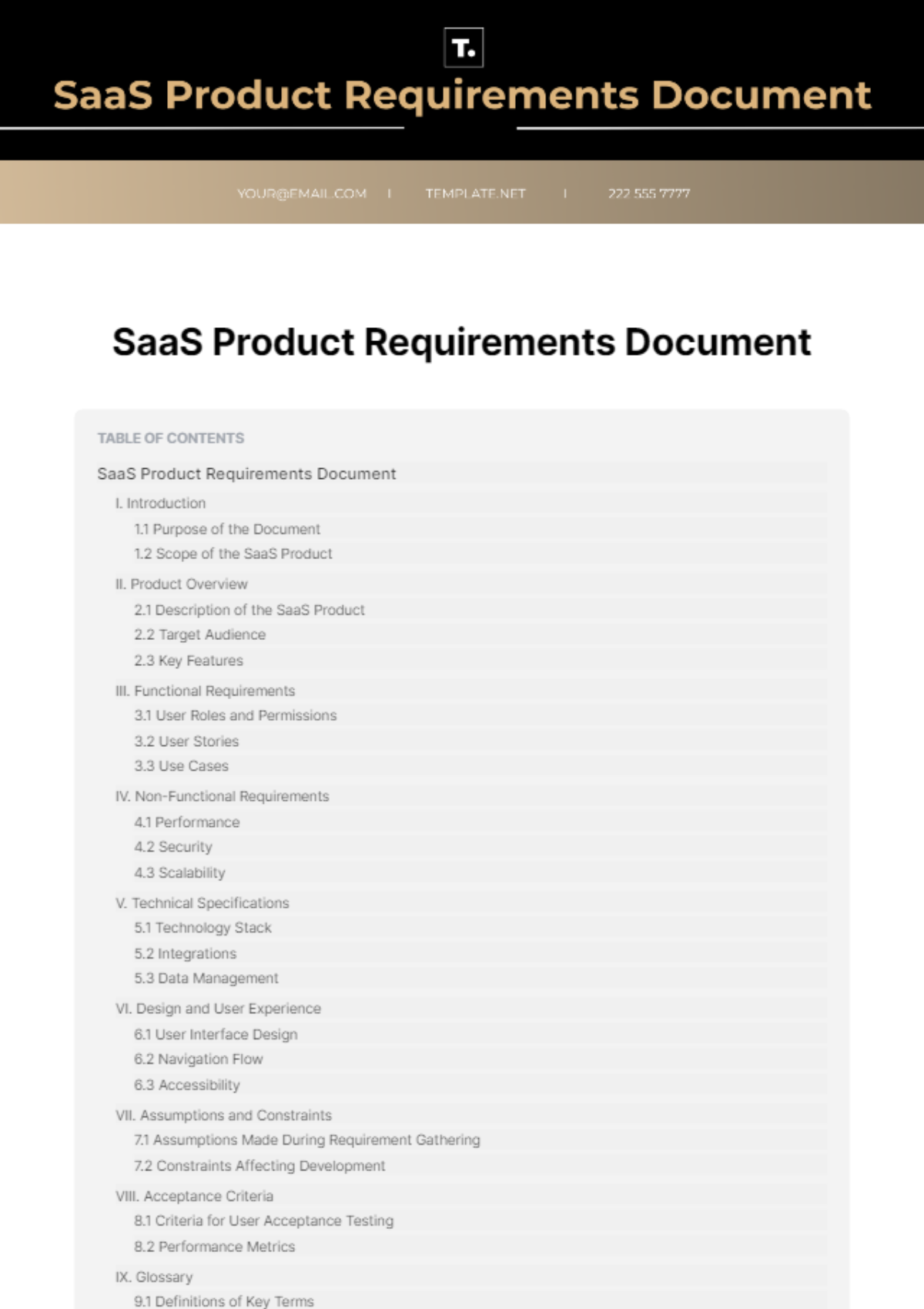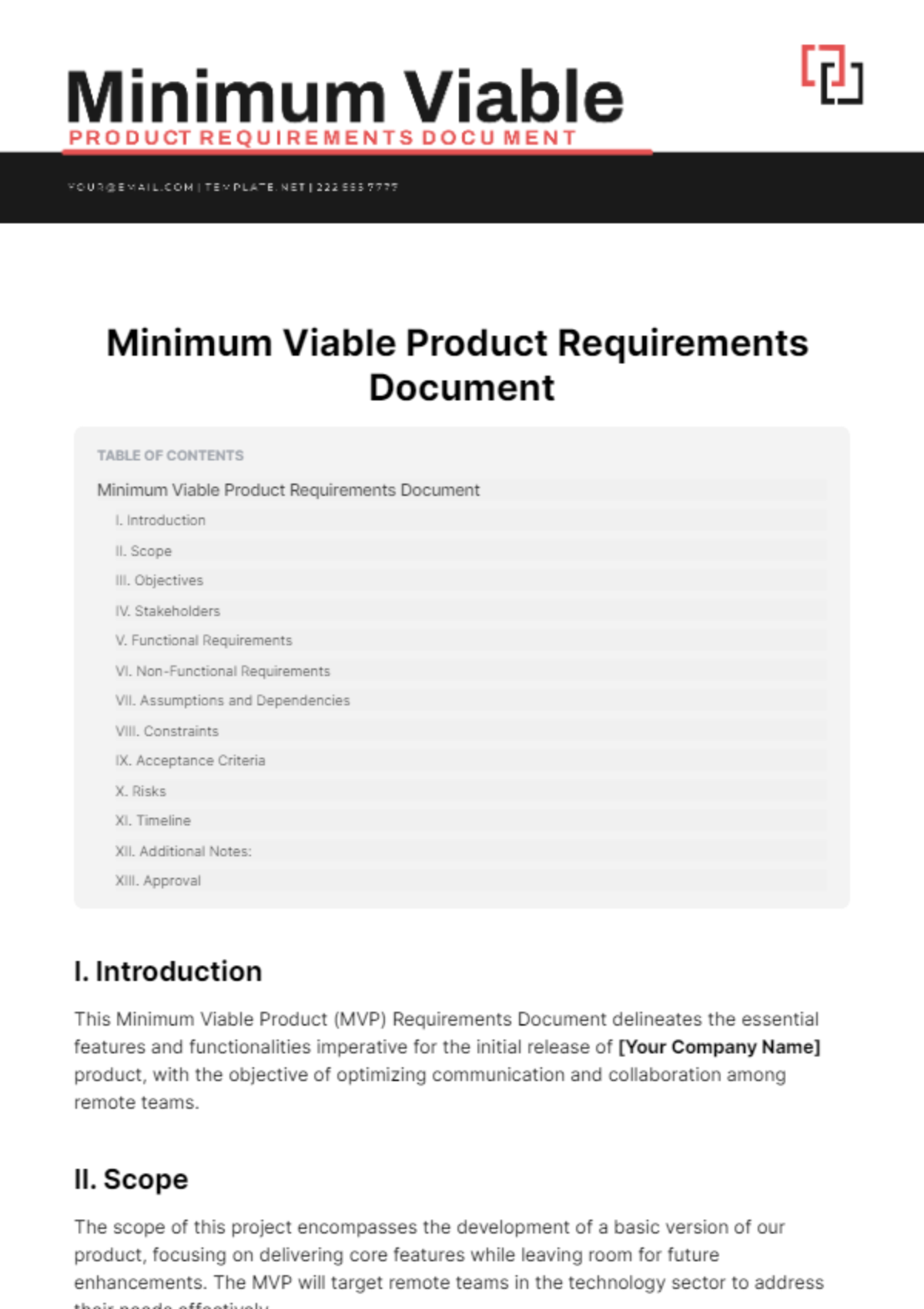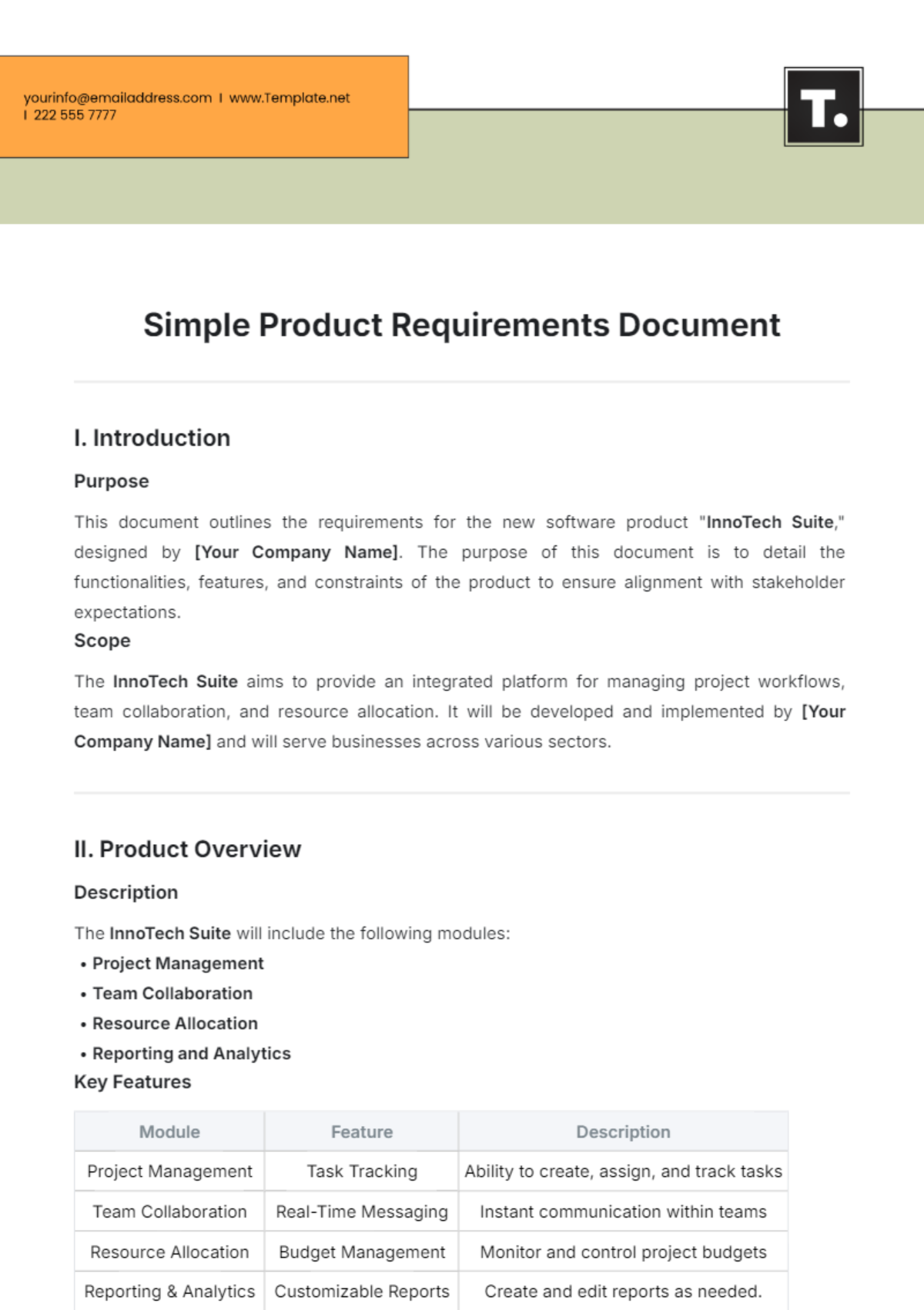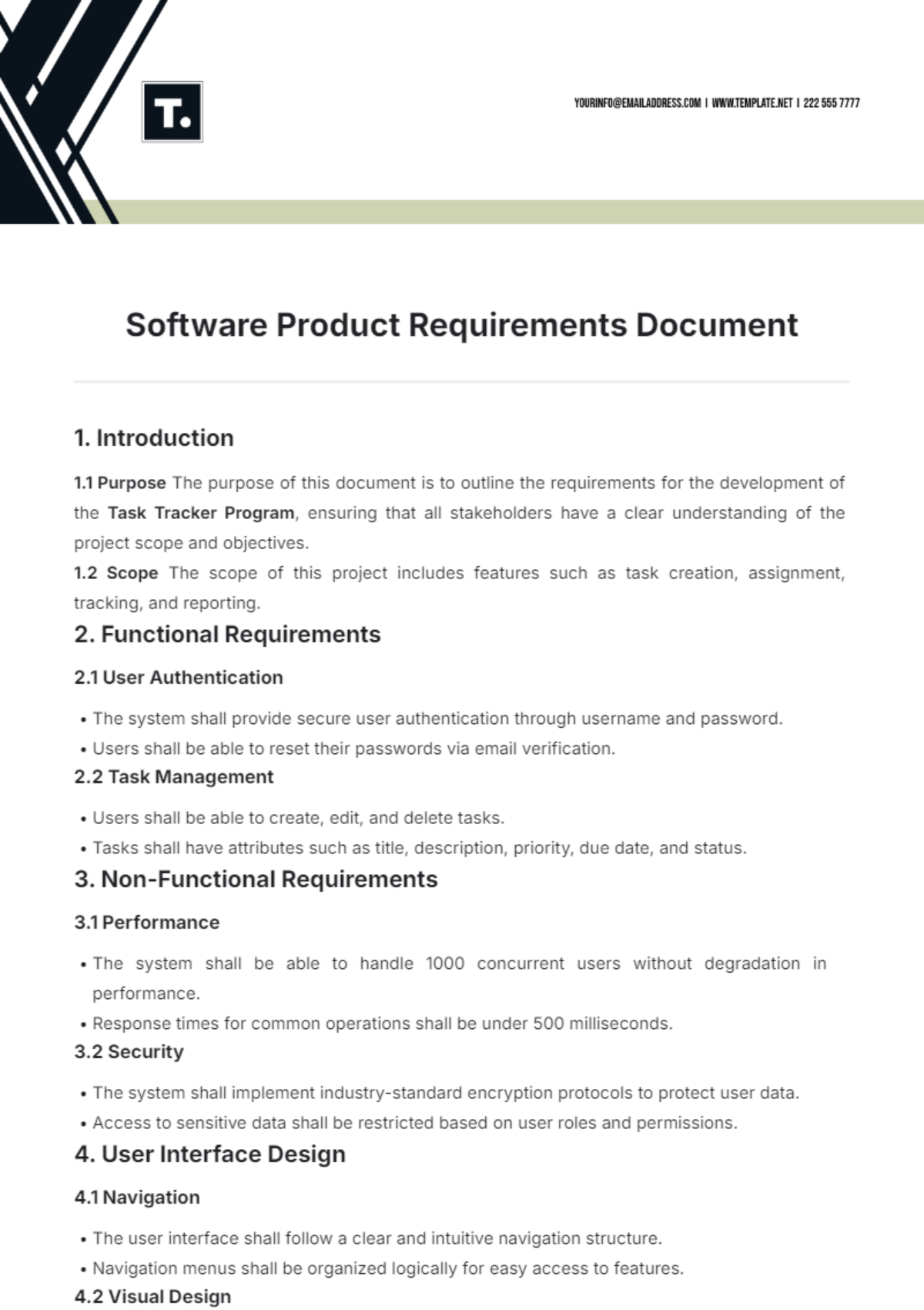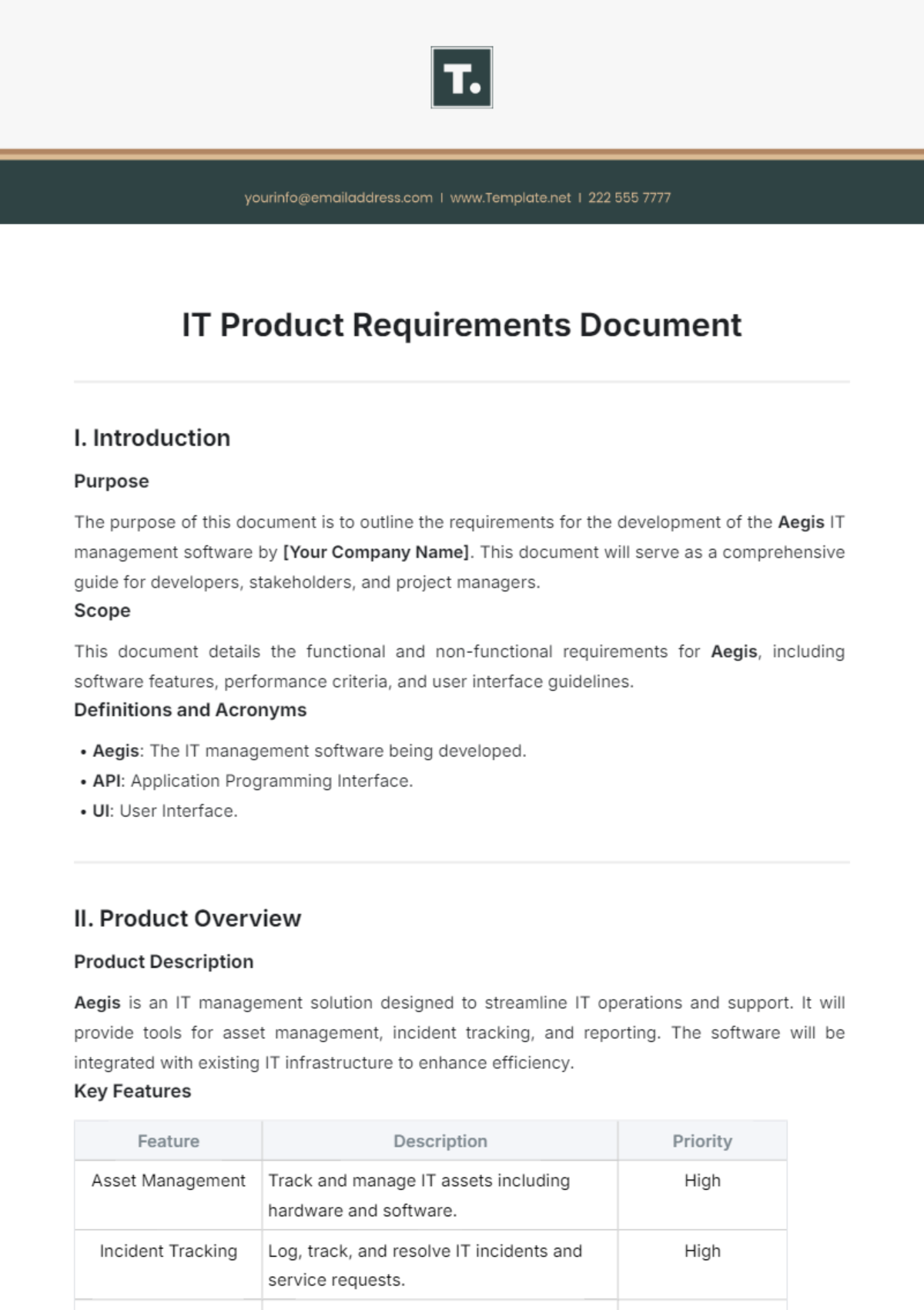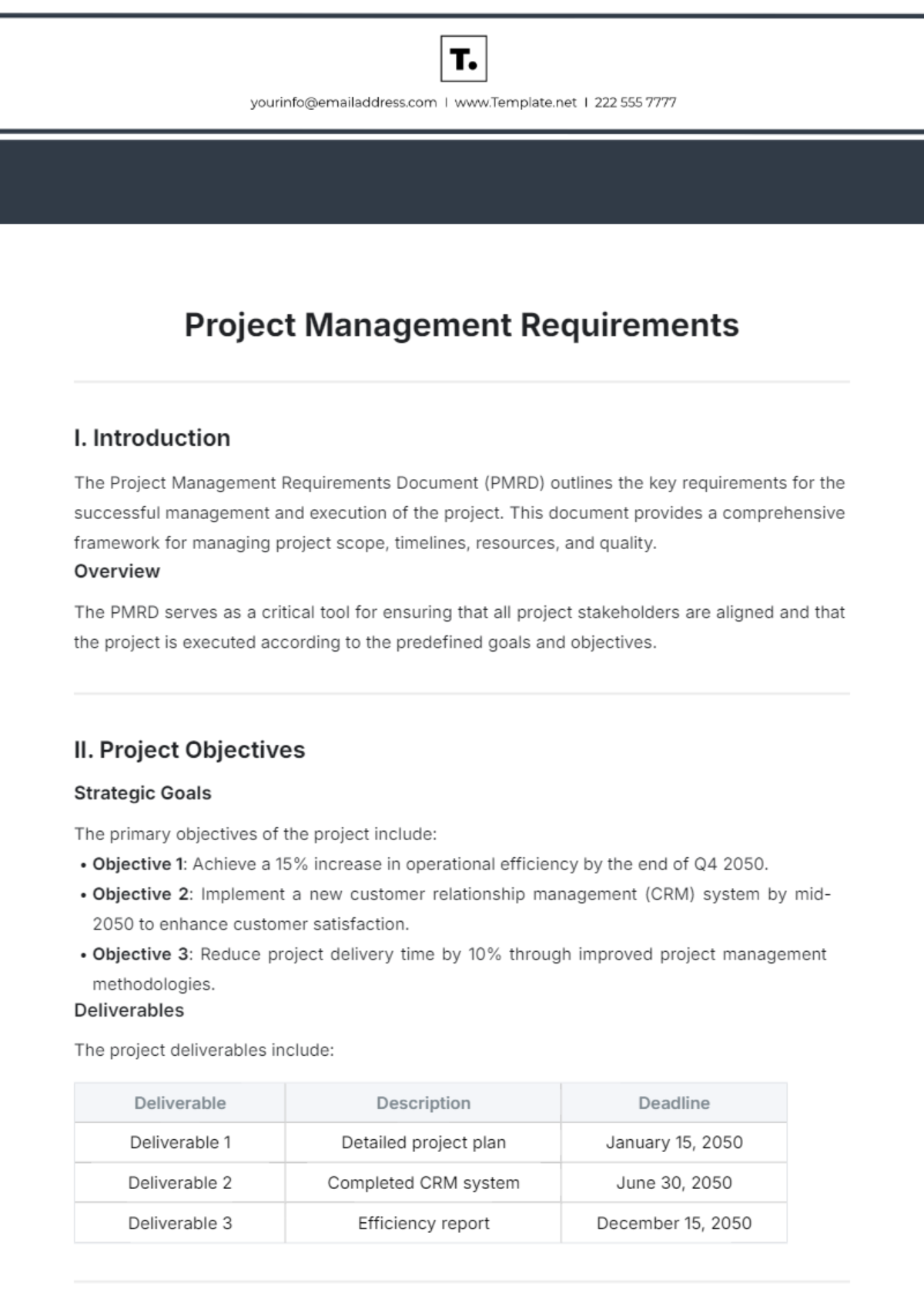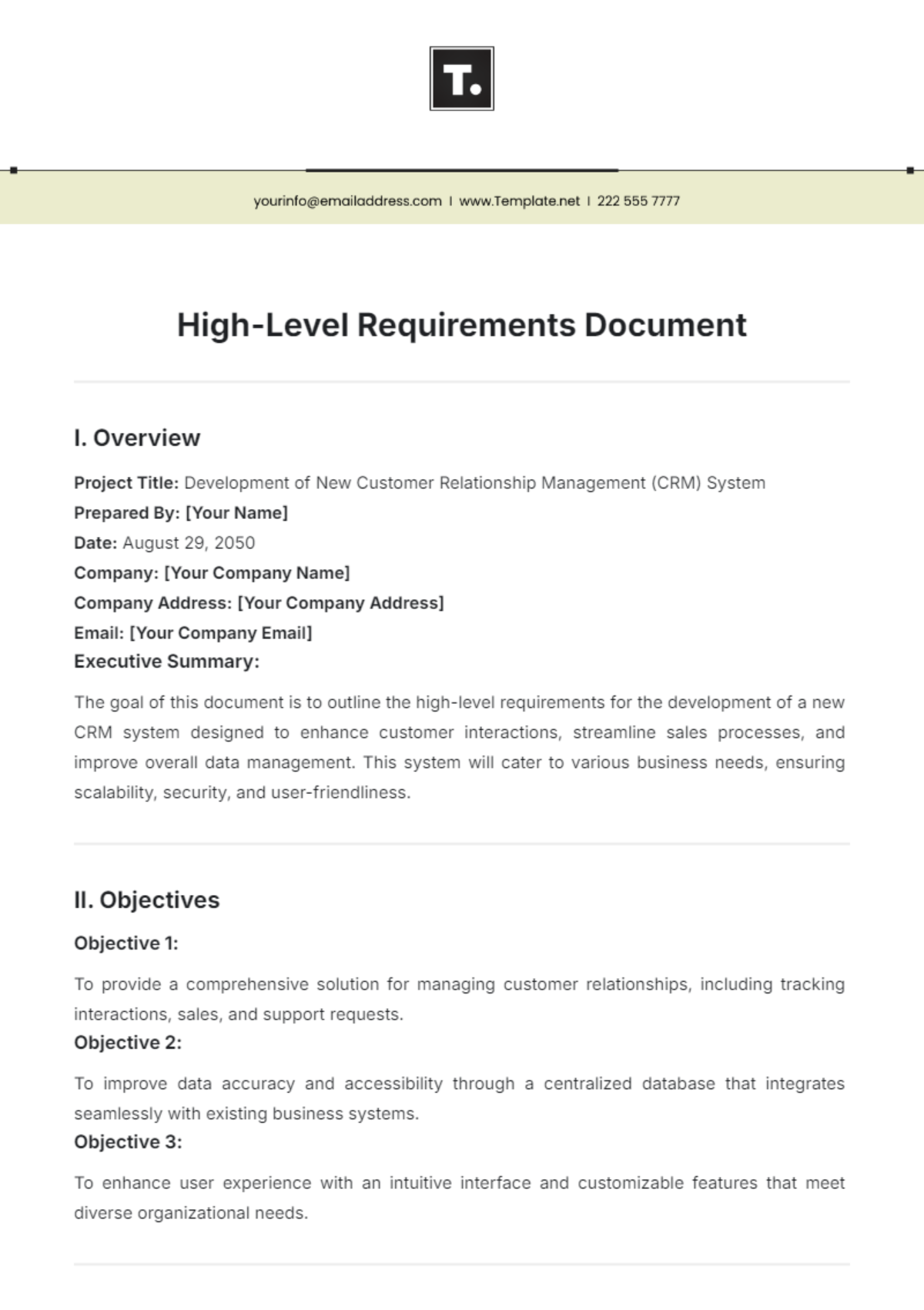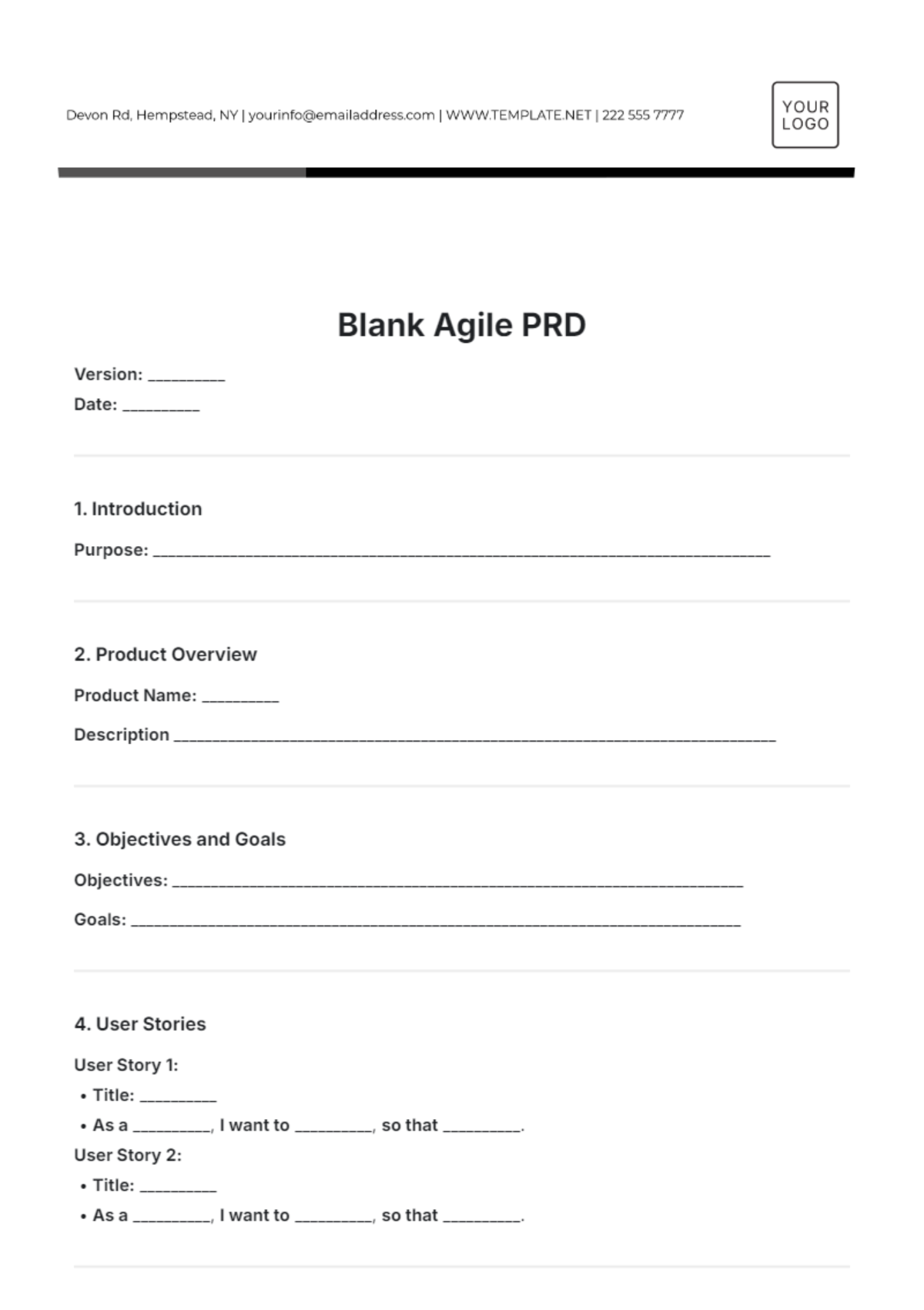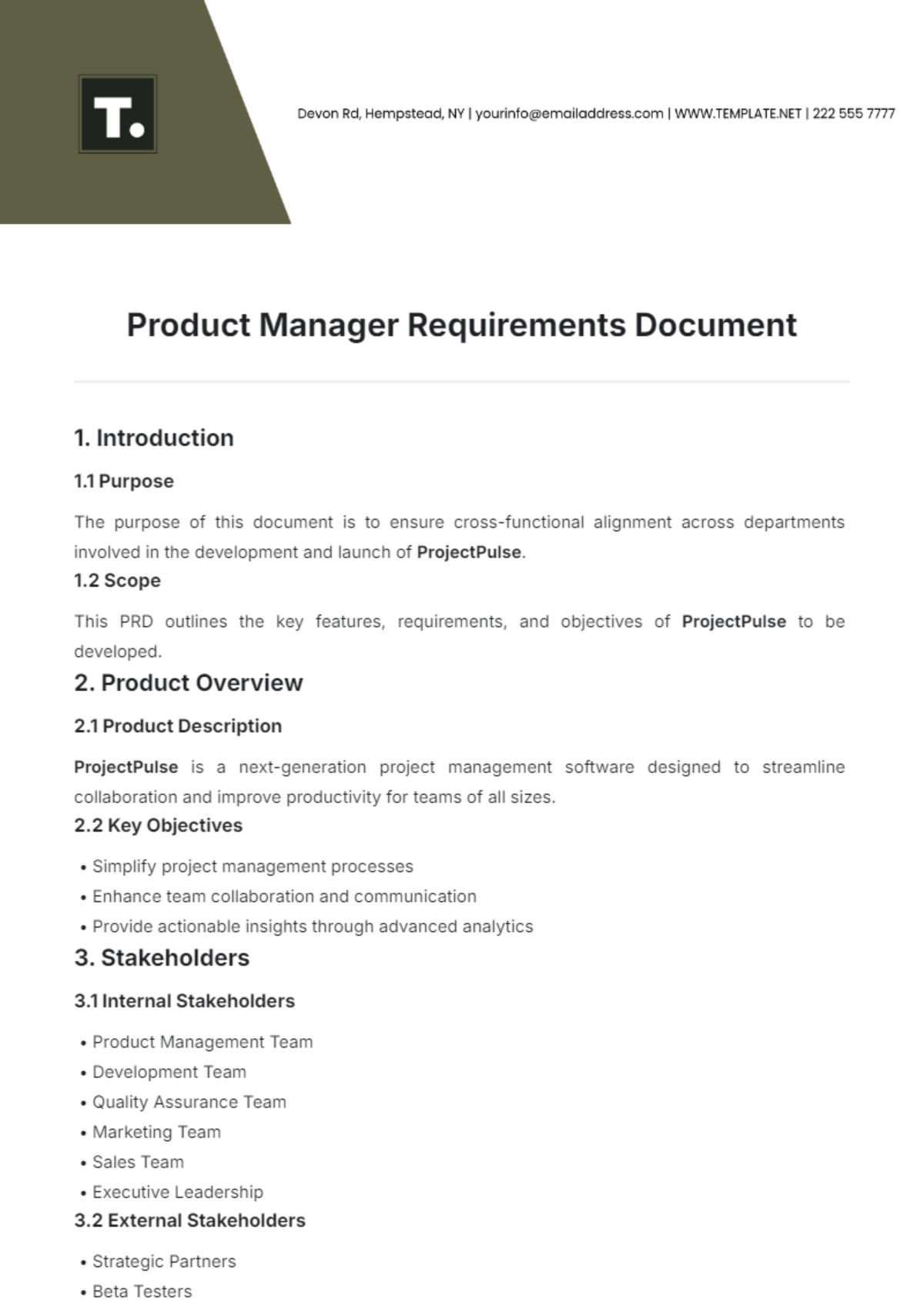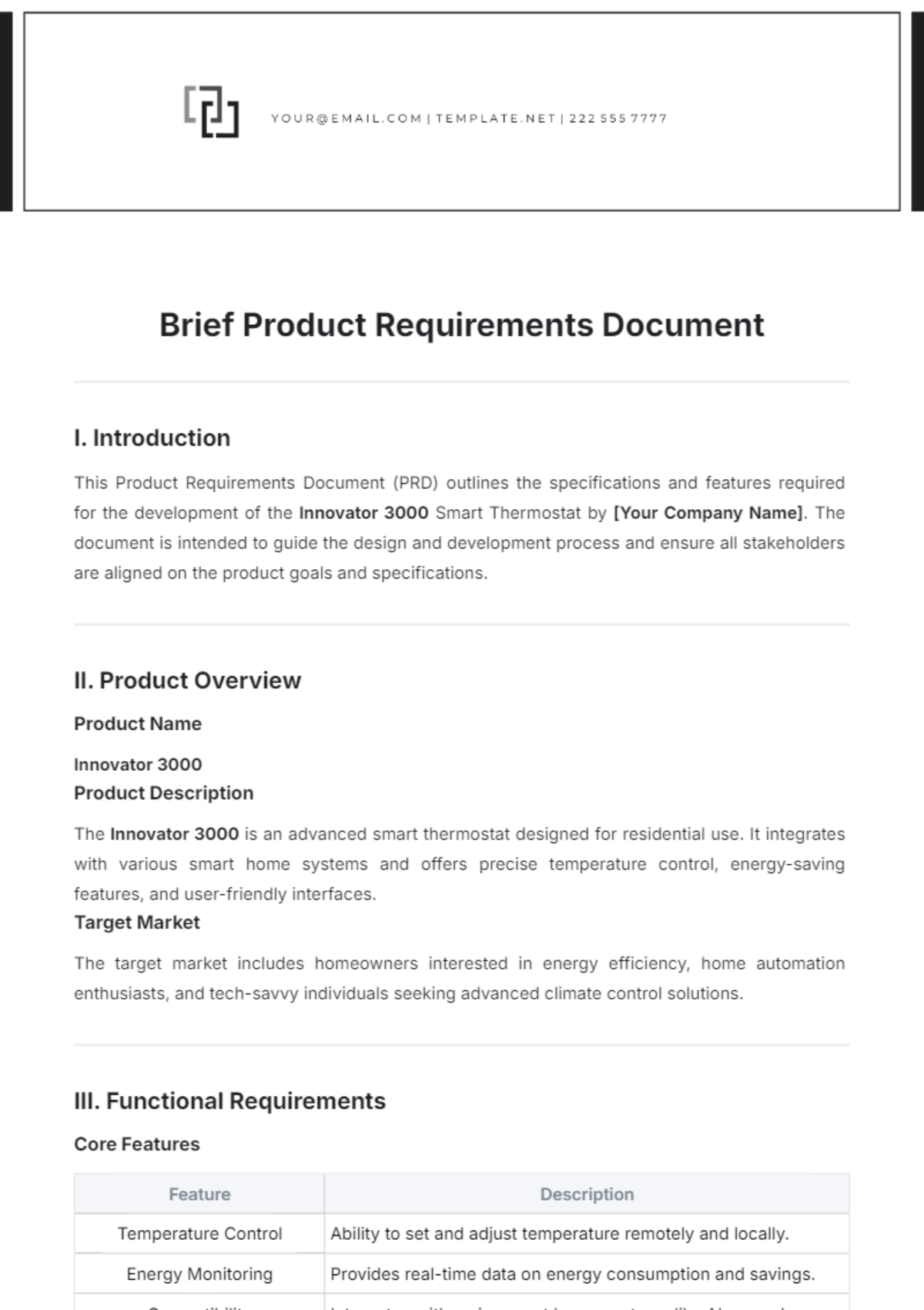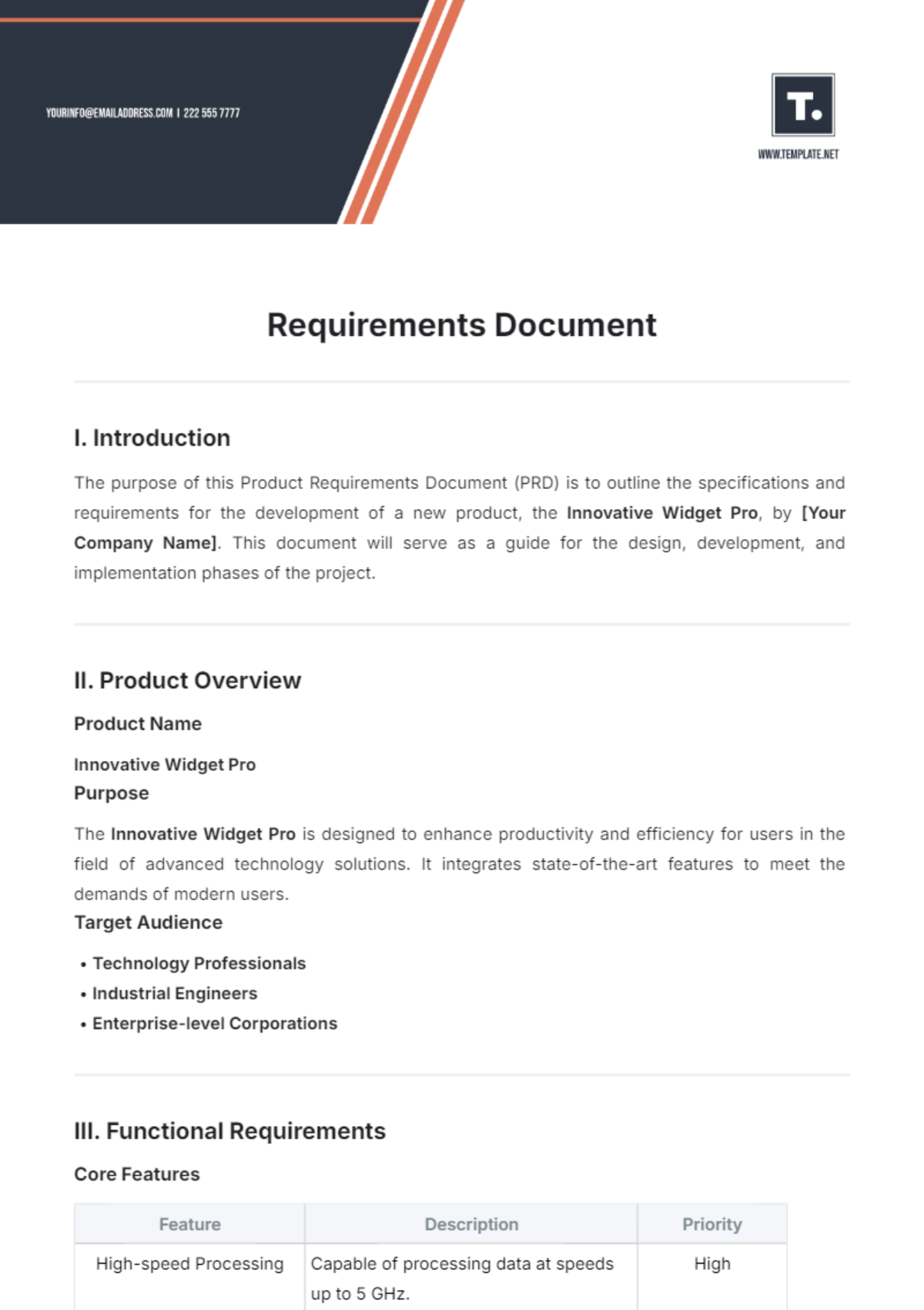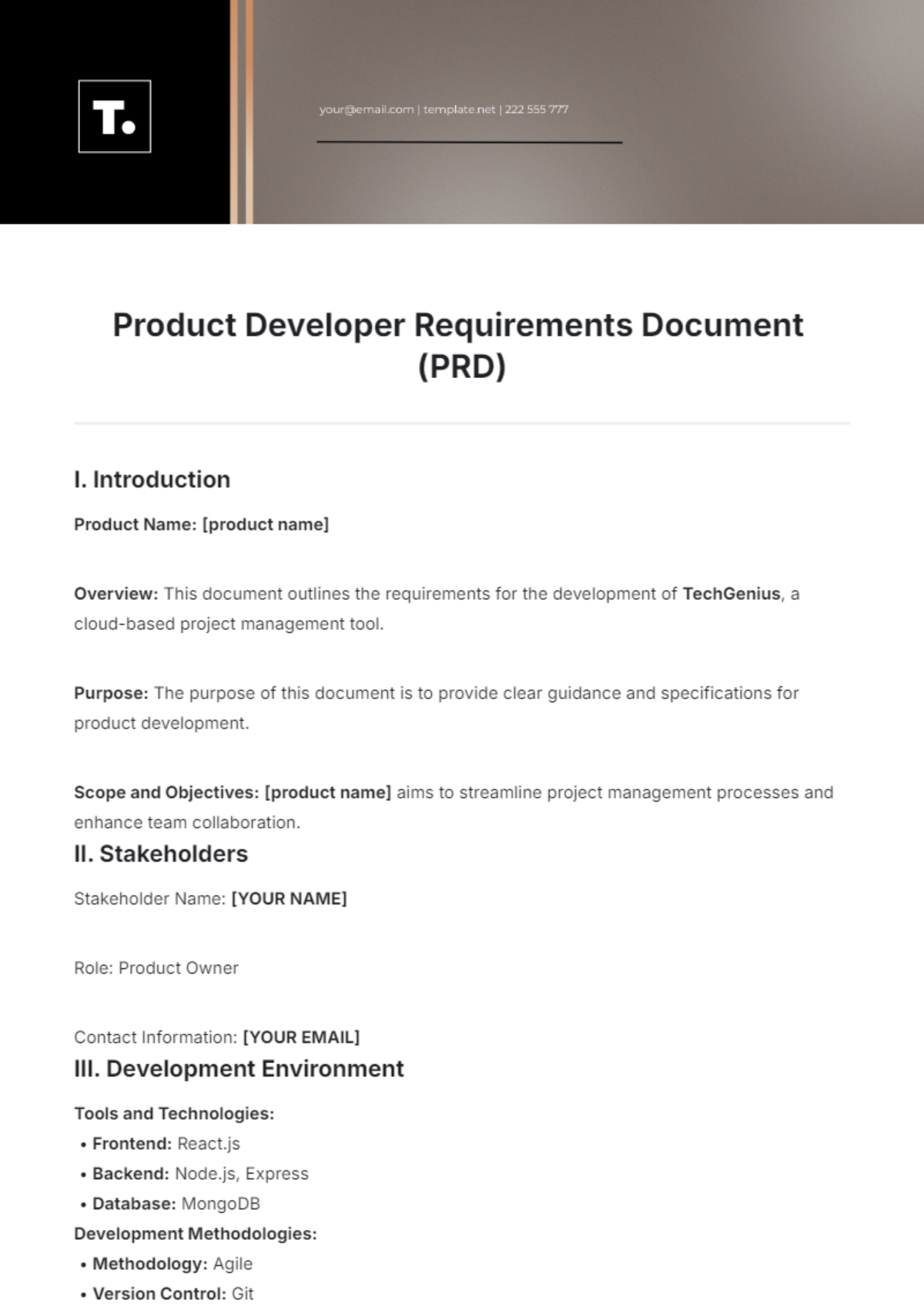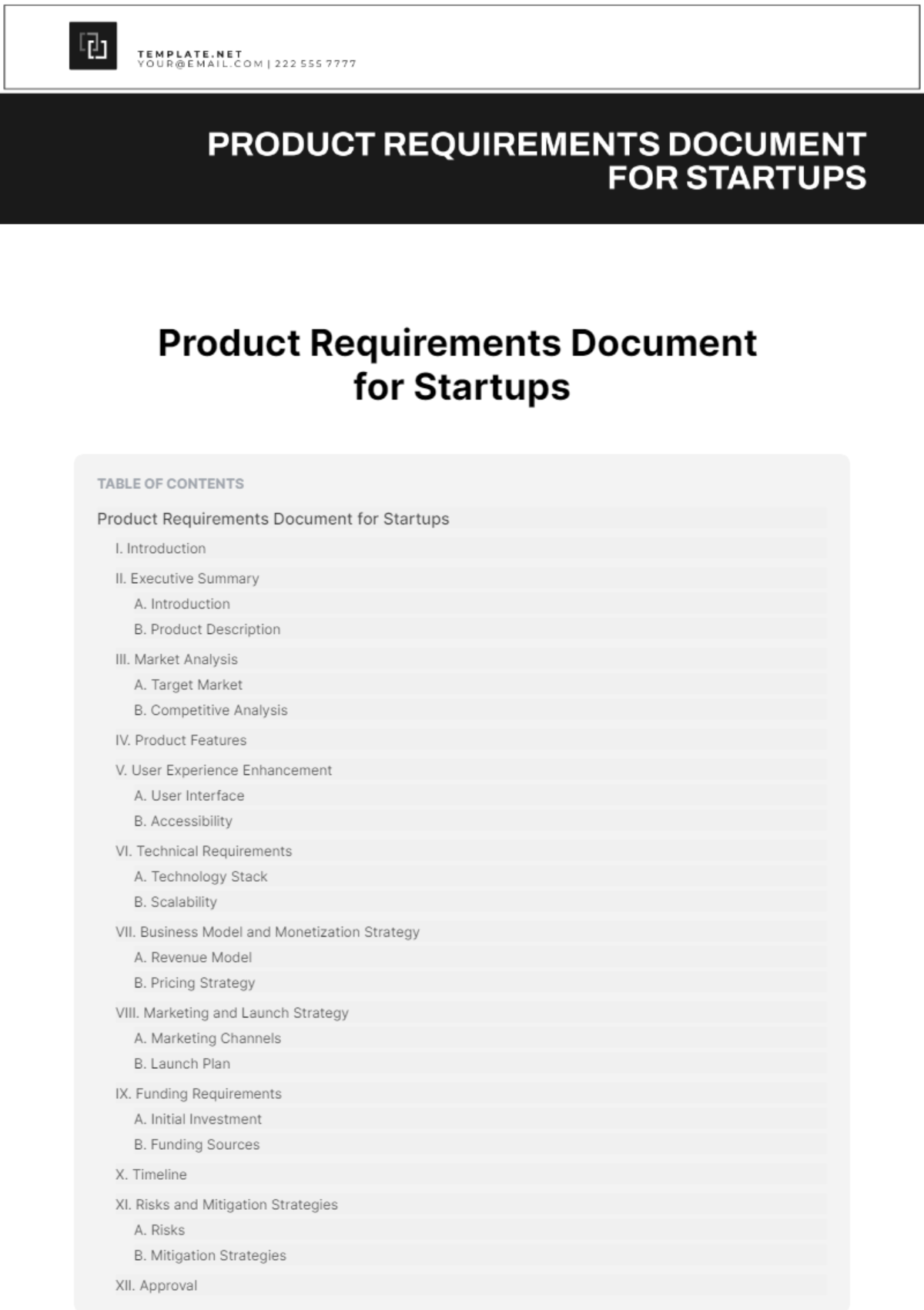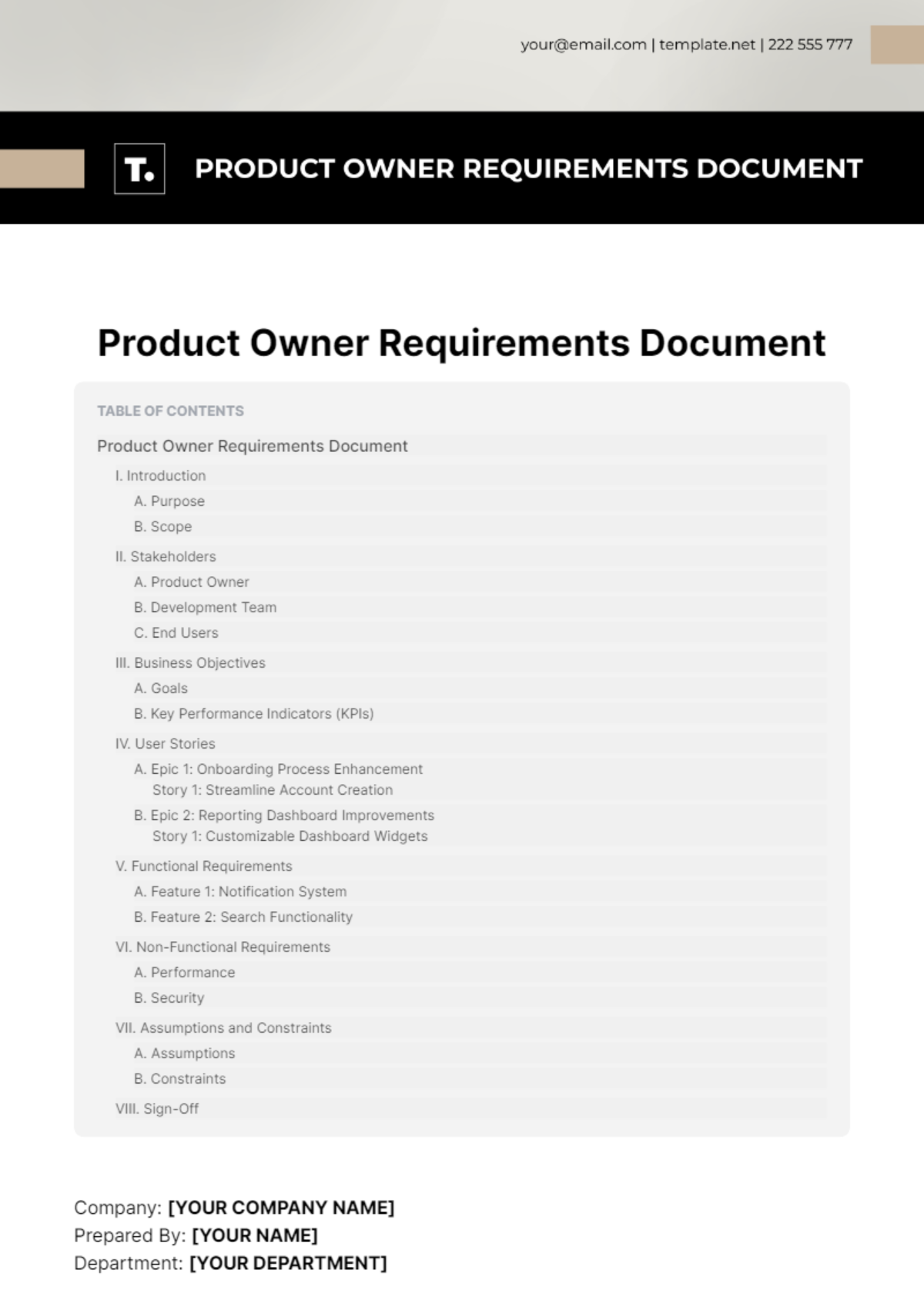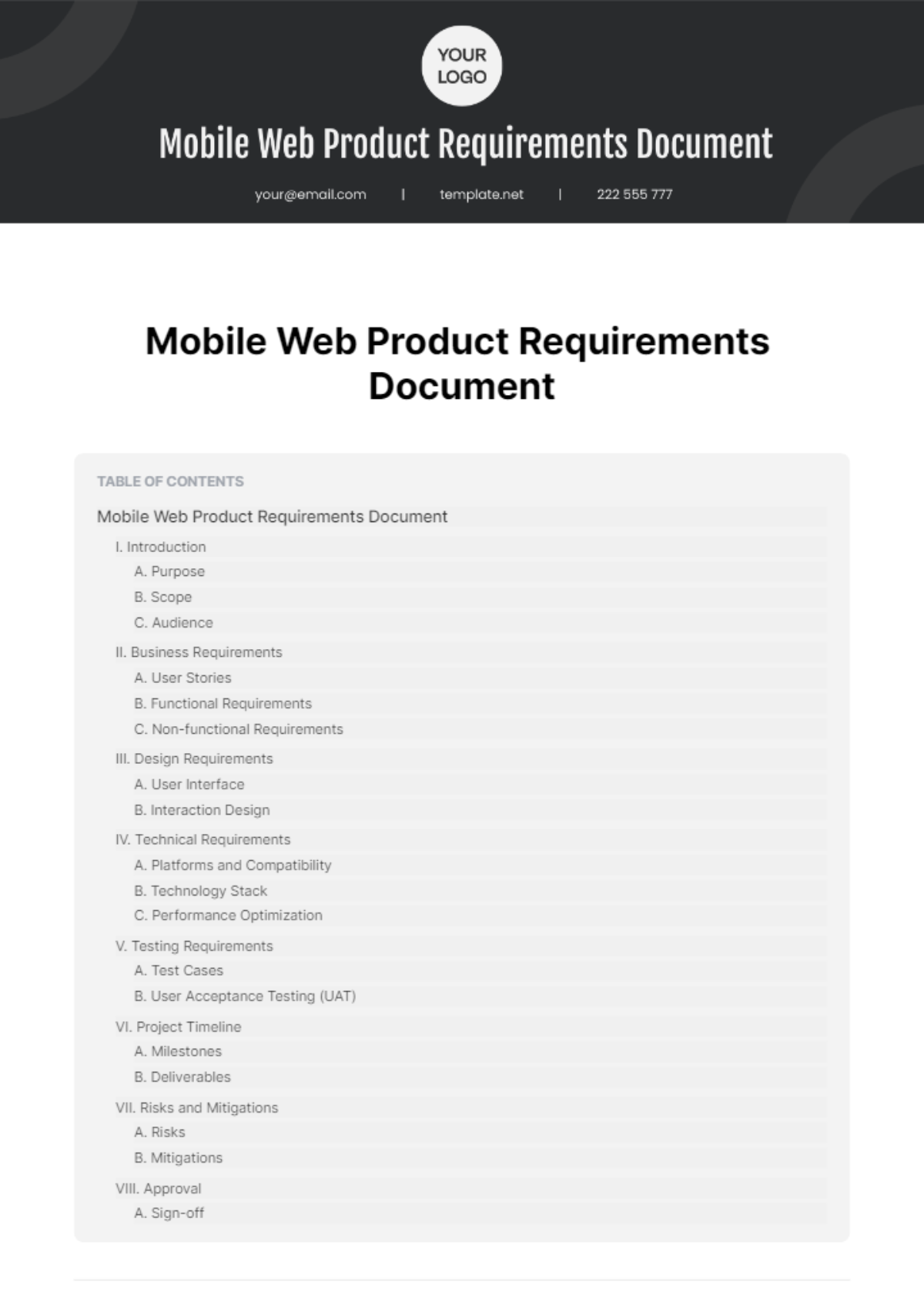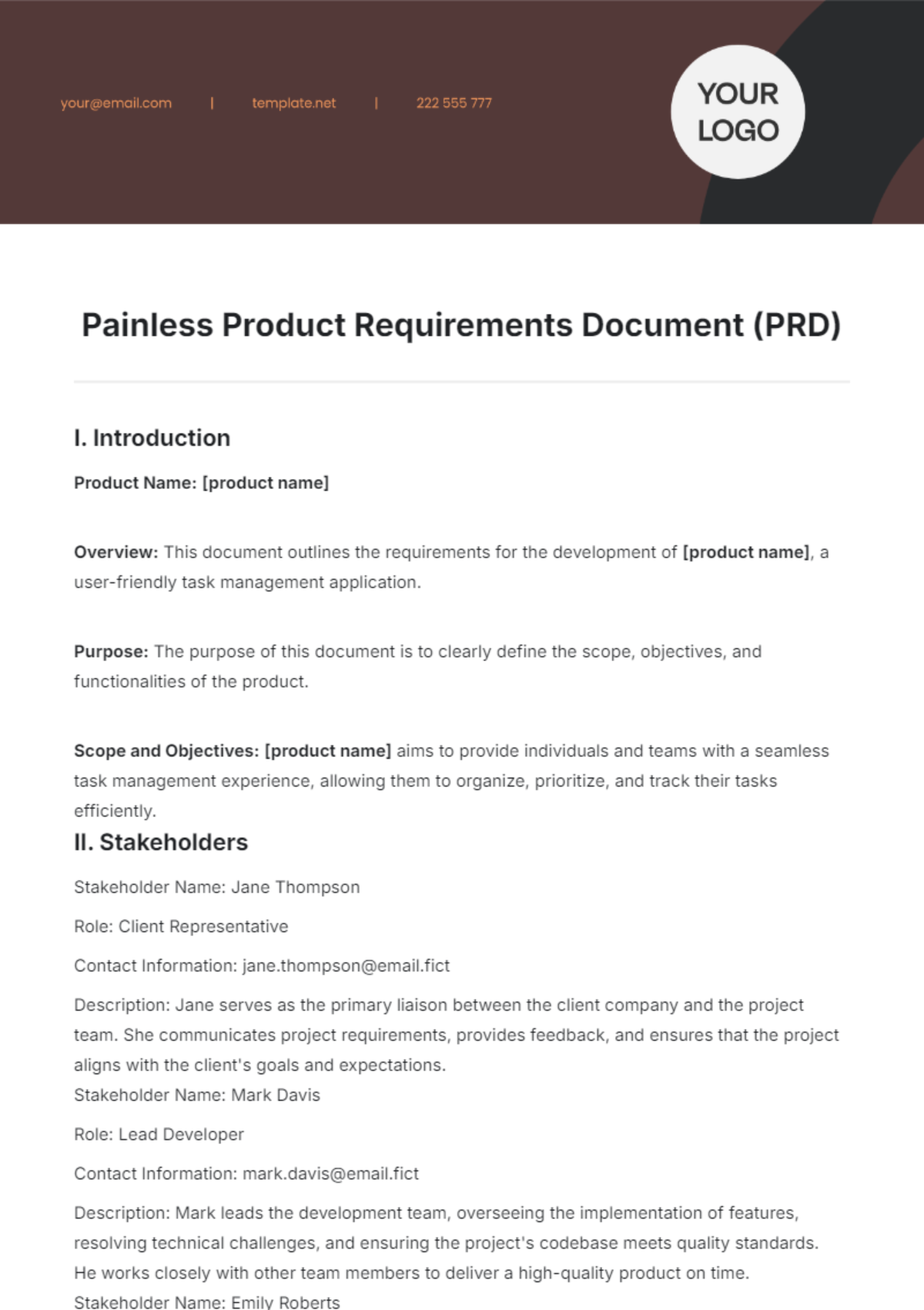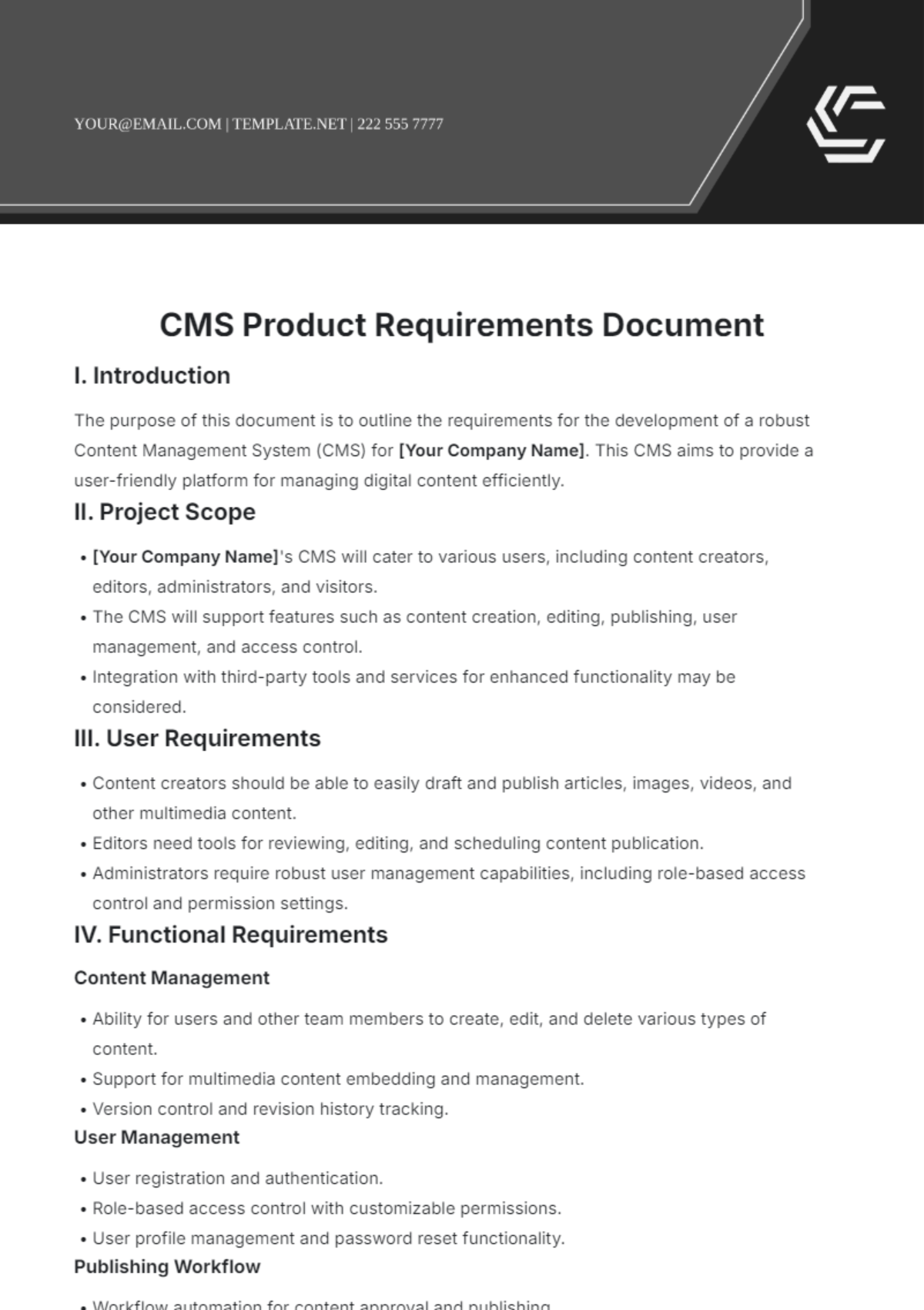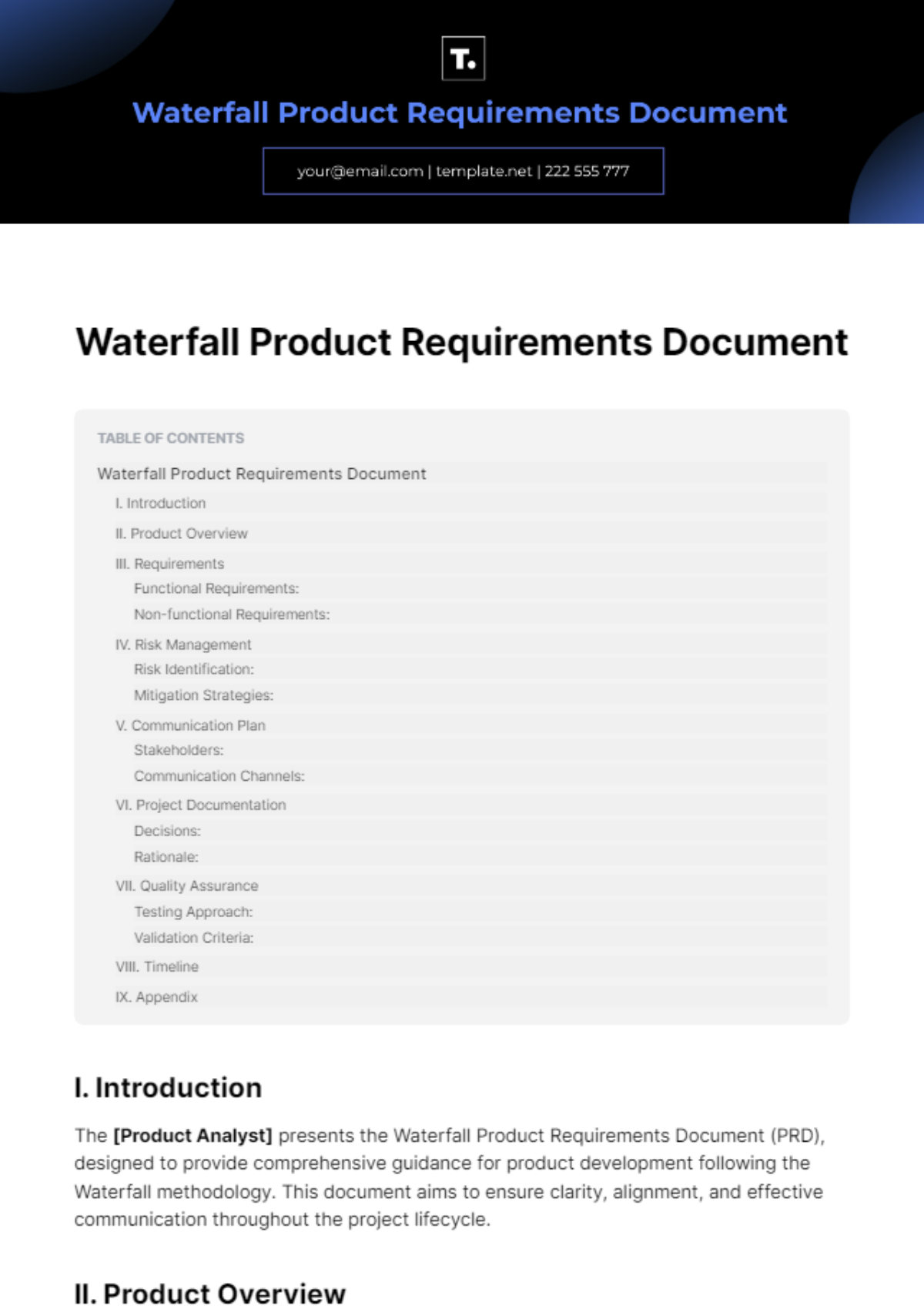Hardware Product Requirements Document
Company: [YOUR COMPANY NAME]
Prepared by: [YOUR NAME]
Department: [YOUR DEPARTMENT]
Date: [DATE]
I. Introduction
[YOUR COMPANY NAME]is thrilled to introduce a groundbreaking hardware product aimed at revolutionizing the healthcare industry. This Hardware Product Requirements Document serves as a comprehensive guide for the development team, ensuring alignment and providing a reference point throughout the product development lifecycle.
II. Product Overview
The [PRODUCT NAME] is a portable medical imaging device designed to streamline diagnostic processes in hospitals and clinics, catering to the needs of healthcare professionals. It aims to address the increasing demand for efficient and accurate medical imaging solutions, delivering improved patient care and diagnosis.
III. User Requirements
User Personas
Physician: Dr. Emily Smith, a busy radiologist who requires quick access to high-quality medical images.
Nurse: Sarah Johnson, a nurse practitioner who needs a user-friendly device for bedside imaging.
Use Cases
Use Case 1: Dr. Smith uses the [PRODUCT NAME] to perform an ultrasound scan on a pregnant patient.
Use Case 2: Nurse Johnson utilizes the device to capture X-ray images of a patient's fractured limb.
IV. Functional Requirements
Core Features
High-resolution Imaging: The device must provide clear and detailed medical images suitable for diagnosis.
Intuitive User Interface: The interface should be easy to navigate, allowing healthcare professionals to operate the device efficiently.
Additional Features
Wireless Connectivity: The device should support wireless transfer of images to hospital networks.
Image Annotation: Users should be able to annotate images with notes and markers for better communication.
V. Non-functional Requirements
Performance
The device must be capable of performing scans with minimal latency, ensuring timely diagnosis.
Reliability
The device should have a high level of reliability, with minimal downtime and consistent performance.
Security
Patient data transmitted by the device must be encrypted to ensure confidentiality and compliance with HIPAA regulations.
VI. Technical Requirements
Hardware Specifications
Processor: Quad-core processor with a clock speed of at least 2.5 GHz.
Memory: 8 GB RAM for smooth operation of imaging software.
Software Requirements
Operating System: Linux-based OS optimized for medical imaging.
Software Dependencies: Integration with DICOM standards for compatibility with existing medical systems.
VII. User Interface / User Experience Design
Wireframes
[Link to Wireframes]
UI/UX Guidelines
Clear and intuitive navigation menus.
Minimalistic design with emphasis on essential functions.
VIII. Dependencies
External Dependencies
Third-party APIs: Integration with hospital information systems for seamless data exchange.
Hardware Components: Dependence on high-quality imaging sensors for accurate results.
Internal Dependencies
Collaboration with Engineering Department: Coordination for hardware and software integration.
Access to Testing Facilities: Availability of testing labs for product validation and quality assurance.
IX. Assumptions and Constraints
Assumptions
Users have basic knowledge of medical imaging techniques.
The device will be used in a controlled clinical environment.
Constraints
Budgetary Limitations: Development costs should be within the allocated budget.
Time Constraints: The product must be ready for market launch within 12 months.
X. Risks and Mitigation Strategies
Identified Risks
Risk 1: Delays in component procurement may lead to project timeline setbacks.
Risk 2: Technical issues during testing could impact product performance.
Mitigation Strategies
Strategy 1: Establish backup suppliers for critical components to mitigate procurement delays.
Strategy 2: Conduct thorough testing at each development stage to identify and address technical issues early.
XI. Glossary
Terms
DICOM: Digital Imaging and Communications in Medicine, a standard for transmitting, storing, and sharing medical images.
HIPAA: Health Insurance Portability and Accountability Act, a US law that protects patients' medical information.
